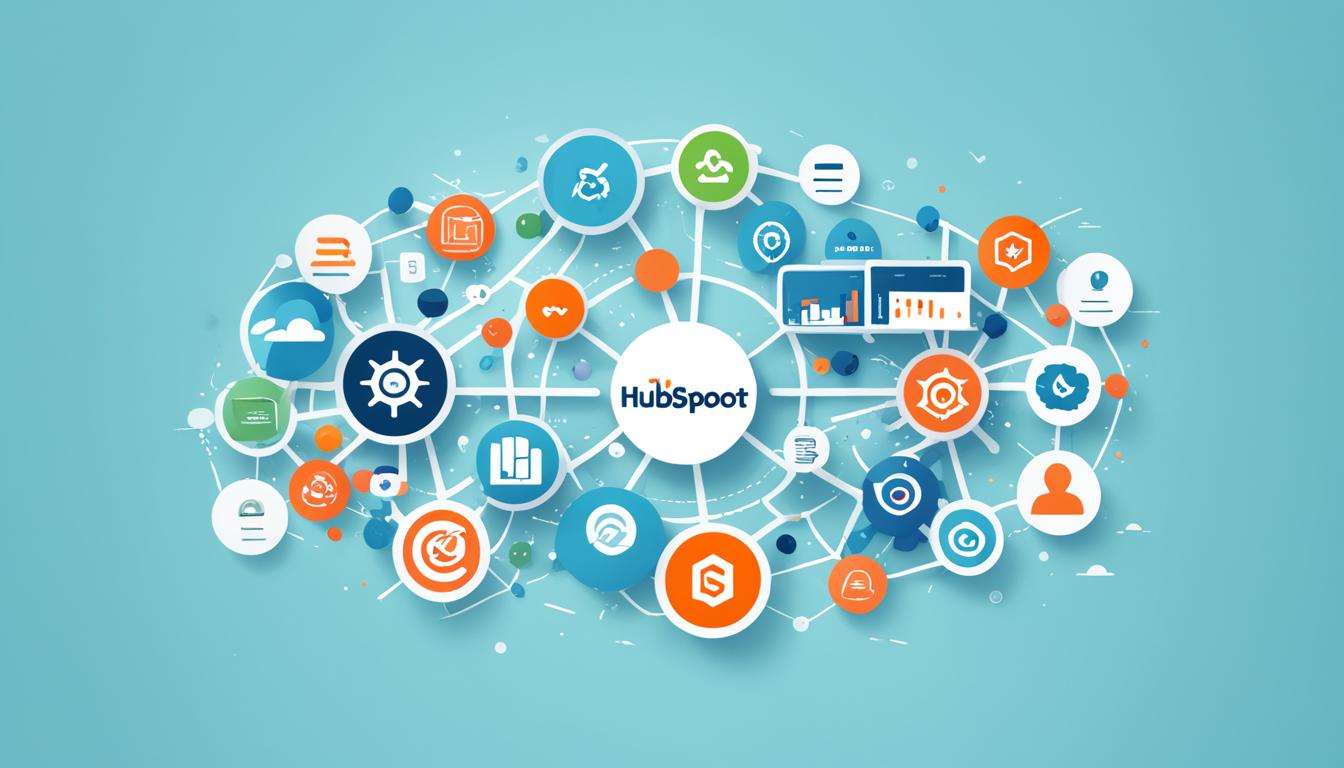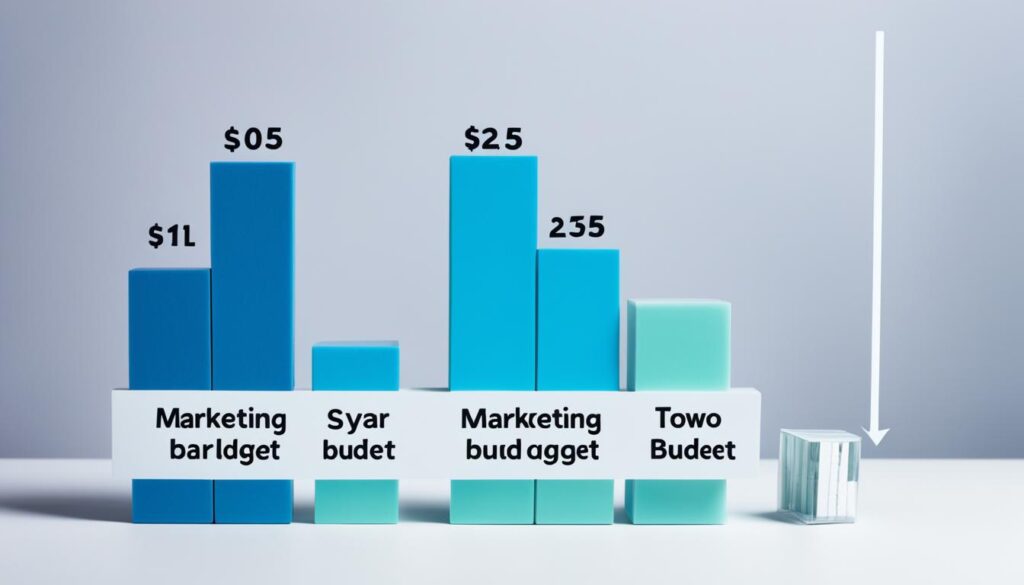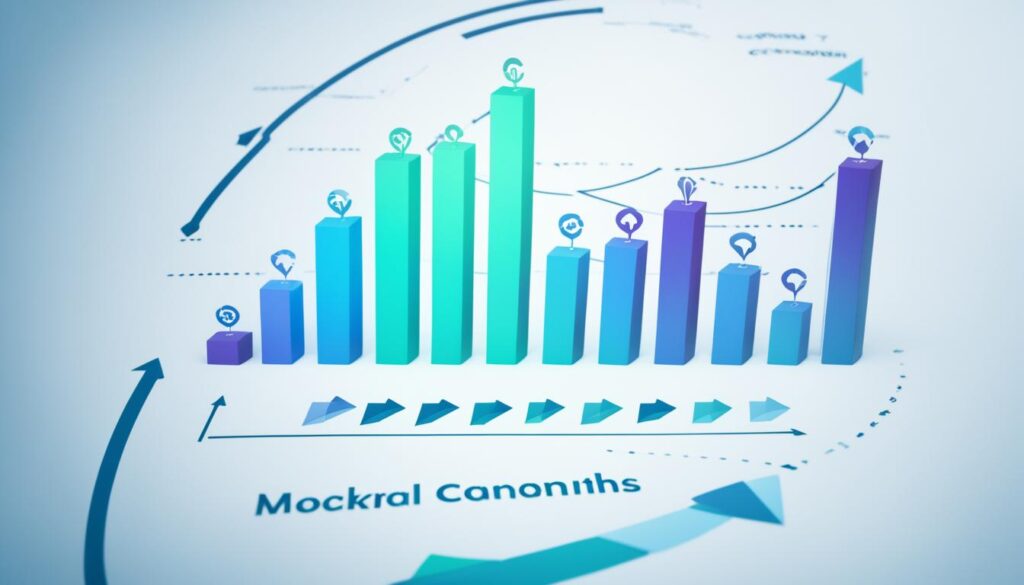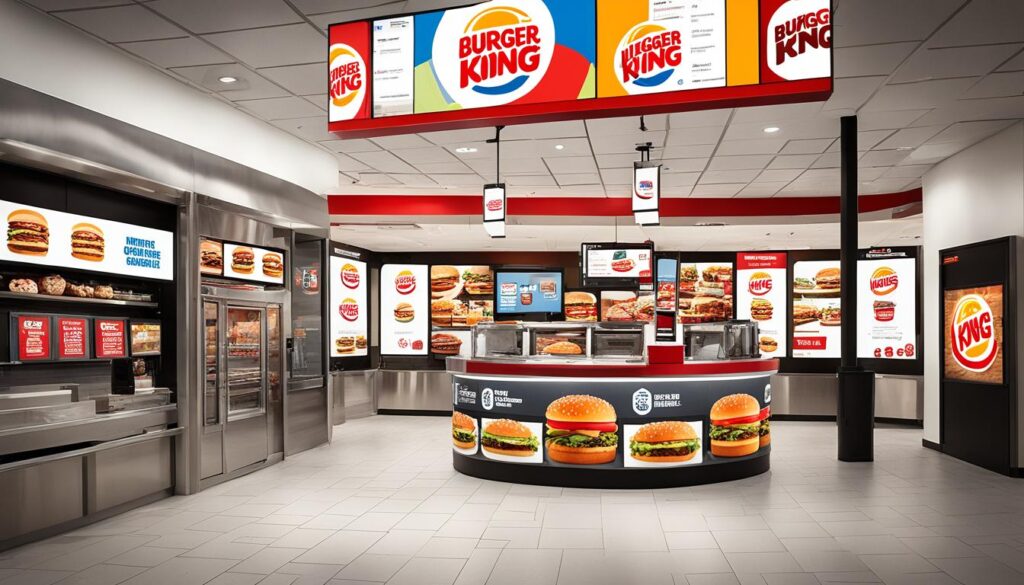Marketing Strategy
Key Lessons for Marketers from Rolling Stone

As marketing professionals, we continuously seek inspiration and insights that can enhance our strategies and lead to business success. An unlikely source of critical lessons is the legendary rock group, the Rolling Stones. Beyond their remarkable musical talent, the Rolling Stones have adeptly maneuvered through the intricate business landscape, providing essential insights that can greatly benefit our marketing initiatives.
The Rolling Stones’ enduring success can be attributed not just to their musical talent but also to their business savvy. They have valuable lessons that marketers can learn from, including the importance of hard work, protecting intellectual property, building a unique brand, meeting legal and tax obligations, continuously innovating, leveraging influencers, and customizing marketing for different platforms.
Key Takeaways:
- Hard work is essential for success – Embrace dedication and tirelessly refine your marketing strategies.
- Protect your intellectual property – Safeguard your brand, trademarks, and copyrights to build brand loyalty and customer engagement.
- Build a unique brand identity – Differentiate yourself from competitors by telling a compelling story and showcasing your brand’s unique qualities.
- Comply with legal and tax obligations – Stay on top of paperwork, play by the rules, and protect your brand’s intellectual property.
- Continuously innovate to stay relevant – Evolve your marketing strategies to keep pace with changing consumer preferences and trends.
These are just a few of the valuable lessons marketers can learn from the Rolling Stones. By implementing these strategies, we can increase audience engagement, build brand loyalty, and ultimately drive business success.
Protecting Intellectual Property
When it comes to brand loyalty and customer engagement, protecting your intellectual property is crucial. The Rolling Stones learned this lesson the hard way when their accountant took ownership of some of their early songs.
However, they quickly adapted and now take vigorous measures to defend their trademarks and copyrights, ensuring their iconic brand is safeguarded. As marketers, we should also prioritize protecting our intellectual property, such as logos, slogans, and product names, to maintain brand integrity and customer trust.
Trademark protections play a significant role in preventing unauthorized use of your brand assets, signaling to customers that they are engaging with an authentic and trusted brand. By securing trademarks, you create a legal foundation to combat infringement and counterfeit activities, reinforcing your brand’s credibility and enhancing the loyalty of your customer base.
Furthermore, copyright protections allow you to retain exclusive rights to your creative works, whether it be music, literature, or visual content. These protections ensure that your original creations cannot be used or reproduced without your permission, bolstering your brand’s uniqueness and creating a competitive advantage.
The Importance of Trademark and Copyright Registrations
Registering your trademarks and copyrights is an essential step in protecting your intellectual property. It provides you with legal recourse and the ability to enforce your rights against infringers. Additionally, registration grants you the right to use the ® symbol, which informs others that your brand assets are legally protected. This helps build trust and confidence among your customers, distinguishing your brand as one that takes intellectual property seriously.
By proactively safeguarding your intellectual property, you not only preserve your brand’s identity but also demonstrate your commitment to maintaining a high standard of quality and authenticity. This builds brand loyalty and fosters customer engagement, as consumers feel assured that they are supporting an ethical and responsible brand.
Protecting our trademarks and copyrights is not just about defending our brand; it’s about preserving the trust and loyalty of our customers. By maintaining ownership over our intellectual property, we ensure that our customers continue to engage with the genuine Rolling Stones experience.
| Benefits of Protecting Intellectual Property | Actions to Safeguard Intellectual Property |
|---|---|
| Enhances brand loyalty | Secure trademark registrations |
| Preserves brand uniqueness | Obtain copyright registrations |
| Builds customer trust | Monitor and enforce infringements |
| Creates a competitive advantage | Utilize legal protections for brand assets |
By taking proactive steps to protect our intellectual property, we can establish a strong foundation for our brands, fostering brand loyalty, boosting customer engagement, and mitigating potential risks. Protecting what makes our brands unique ultimately sets us apart from competitors and enables us to thrive in an ever-evolving marketplace.
Building a Unique Brand
In order to stand out from their competitors, such as The Beatles, The Rolling Stones made a conscious effort to create a unique brand that resonated with fans. Marketers can learn from this approach by understanding the power of storytelling in marketing and the importance of creating a strong brand identity.
Storytelling is a powerful tool that allows marketers to connect with their audience on a deeper level and create an emotional connection. By sharing stories about their brand’s history, values, and mission, marketers can engage consumers and build a loyal following.
One way to incorporate storytelling into marketing is through content creation. Marketers can use blog posts, articles, videos, and social media posts to tell their brand’s story and share compelling narratives. This helps to create an authentic and relatable image that resonates with consumers.
Example of Brand Storytelling:
“Our brand was born out of a passion for adventure and exploration. We wanted to inspire people to embrace their wanderlust and discover new experiences. Our founders, Jane and David, started this company in their small apartment, armed with a dream and a sense of adventure. Today, we are proud to have a community of travelers who share our passion and embody the spirit of exploration.”
In addition to storytelling, marketers should also focus on creating a strong brand identity. This involves carefully crafting the visual elements, tone of voice, and overall personality of the brand.
A visual representation of brand identity can include a logo, color scheme, and typography that reflects the brand’s values and appeals to the target audience. For example, a luxury brand may use elegant and sophisticated visuals, while a youthful and fun brand may incorporate vibrant and playful elements.
Furthermore, a consistent tone of voice across all marketing channels helps to establish the brand’s personality and create a cohesive experience for consumers. Whether it’s through social media posts, website content, or advertising campaigns, the brand’s voice should be authentic, relatable, and aligned with its target audience.
By focusing on storytelling in marketing and creating a unique brand identity, marketers can set themselves apart from competitors and build a loyal customer base. The Rolling Stones’ success in building a unique brand serves as a valuable lesson for marketers looking to make a lasting impact in today’s competitive market.

Meeting Legal and Tax Obligations
Ensuring compliance with legal and tax obligations is crucial for marketers to maintain a successful and reputable business.
The Rolling Stones themselves faced accountancy and tax troubles in their early career, and we can learn from their experiences to prevent similar pitfalls. By staying up to date with paperwork, playing by the rules, and seeking guidance from experienced accountants, we can legally minimize our tax liabilities and avoid unnecessary complications. Additionally, it is essential to be vigilant in protecting our copyrights and trademarks to safeguard our intellectual property.
In today’s competitive landscape, where intellectual property theft and legal disputes are common, taking proactive measures to protect our brand is imperative.
Copyright and trademark protections offer legal recourse against infringement and assure customers and partners regarding our commitment to quality, authenticity, and credibility. By registering our logos, slogans, and product names, we can establish a strong foundation for our brand and guard against unauthorized use by competitors.
Avoiding Legal and Tax Issues
To steer clear of legal and tax complications, here are some key steps that marketers can take:
- Stay organized: Keep meticulous records of financial transactions, expenses, and receipts to ensure accurate reporting and facilitate smooth tax filings.
- Follow regulations: Familiarize ourselves with relevant laws, regulations, and industry-specific compliance requirements to ensure proper adherence and avoid penalties.
- Seek professional advice: Engage the services of experienced accountants or tax advisors who specialize in our industry to navigate complex tax codes and optimize tax planning strategies.
- Regularly review contracts: Carefully examine contractual agreements to understand legal obligations, rights, and potential risks. Consult with legal experts, if necessary, to mitigate any potential legal disputes.
By proactively addressing legal and tax obligations, we can establish a stable and ethically responsible business foundation. Maintaining compliance not only protects us from legal troubles but also builds trust with customers, partners, and investors.

| Tax Obligations | Intellectual Property Protection |
|---|---|
| Filing accurate tax returns | Registering copyrights and trademarks |
| Paying taxes on time | Monitoring for potential infringement |
| Minimizing tax liabilities legally | Taking legal action against infringers |
| Staying updated with tax laws | Defending brand identity in court |
Continuously Innovating
In the ever-evolving world of marketing, one key lesson we can learn from the Rolling Stones is the importance of staying innovative. Throughout their long and successful career, the Rolling Stones have continuously evolved and released new music to captivate their audience. Marketers can apply this principle to their own strategies to stay relevant and engage their customers.
By embracing innovation, marketers can differentiate themselves from their competitors and stay ahead of the curve. This means constantly exploring new ideas, technologies, and approaches to reach and connect with their target audience. It also involves regularly evaluating and adapting their marketing tactics to stay aligned with changing customer preferences.

One effective way to stay innovative in marketing is by closely monitoring industry trends and consumer behavior. By keeping a finger on the pulse of the latest developments, marketers can identify emerging opportunities and adapt their strategies accordingly. This could involve adopting new digital platforms, leveraging social media trends, or incorporating the latest technologies into their marketing campaigns.
“Innovation distinguishes between a leader and a follower.” – Steve Jobs
However, staying innovative goes beyond simply following the latest trends. It also requires creativity, experimentation, and a willingness to take calculated risks. Marketers should encourage their teams to think outside the box and explore new ideas that challenge conventional wisdom. This can lead to breakthrough marketing campaigns that capture the attention and imagination of their target audience.
The Benefits of Continuous Innovation
Embracing a culture of continuous innovation can provide numerous benefits for marketers. Firstly, it allows them to adapt to changing customer needs and preferences, ensuring their marketing messages remain relevant and impactful.
Secondly, staying innovative fosters customer loyalty and engagement. By consistently offering fresh and exciting experiences, marketers can build a strong emotional connection with their customers, encouraging repeat purchases and fostering brand advocacy.
Case Study: Spotify
A prime example of a company that has embraced continuous innovation in the music industry is Spotify. Through its innovative platform, personalized playlists, and data-driven recommendations, Spotify has revolutionized the way people discover and consume music.
| Key Innovations | Impact |
|---|---|
| Personalized playlists | Increased user engagement and retention |
| Data-driven recommendations | Enhanced user satisfaction and discovery of new artists |
| Collaborations with influencers | Expanded user base and brand visibility |
Spotify’s continuous innovation has propelled it to become a leading player in the music streaming industry, with millions of active users worldwide. By adapting its platform to meet the ever-changing demands of music lovers, Spotify has successfully cultivated a loyal and engaged customer base.
In conclusion, staying innovative is a crucial marketing lesson we can learn from the Rolling Stones. By embracing creativity, monitoring industry trends, taking calculated risks, and continuously adapting their strategies, marketers can stay ahead of the competition, engage their customers, and drive business success.
Authenticity and Storytelling
When it comes to successful marketing strategies, authenticity and storytelling are key. Rolling Stone Culture Council members have highlighted the importance of these elements in engaging and connecting with your audience. As marketers, it is crucial for us to cultivate an authentic perspective and clearly communicate the value we offer to our target audience.
Storytelling, in particular, plays a significant role in content marketing. By crafting compelling narratives, we can captivate our audience and create a deeper connection with them. Storytelling allows us to convey our brand’s personality, values, and mission in a way that resonates with our audience.
One way to leverage storytelling in marketing is by using testimonials and case studies. These real-life examples can demonstrate the benefits and success stories associated with our products or services. By sharing authentic experiences and customer stories, we can build trust and credibility with our audience.
“Authenticity is key in marketing. Customers today are more discerning than ever, and they want to support brands that align with their values and beliefs. By being true to who we are and telling our brand story in an authentic way, we can attract and retain loyal customers.” – Rolling Stone Culture Council Member
Additionally, content marketing allows us to engage our audience through storytelling. By creating valuable and relevant content that resonates with their needs and interests, we can establish ourselves as trusted sources of information and industry experts. This engagement builds a strong relationship with our audience, leading to increased brand loyalty and customer satisfaction.
To effectively incorporate authenticity and storytelling into our marketing strategies, we can:
- Develop a clear brand voice that reflects our values and resonates with our audience.
- Use real-life examples and customer stories to illustrate the benefits of our products or services.
- Create compelling narratives that connect with our audience’s emotions and experiences.
- Share valuable, informative, and relevant content to our target audience.
Case Study: How Company X used storytelling to engage their audience
Company X, a sustainable fashion brand, wanted to connect with their target audience of environmentally-conscious consumers. They created a video campaign showcasing the stories of their artisans and the impact of their fair-trade practices on local communities. By highlighting the human side of their brand and the positive change they were making, Company X successfully engaged their audience and increased brand awareness.

Through authenticity and storytelling, marketers have the power to create meaningful connections and foster audience engagement. We can build trust, loyalty, and long-term success by crafting compelling narratives and being true to our brand’s values.
Leveraging Influencers
In today’s digital age, social media marketing has become an indispensable tool for businesses to reach their target audience. One effective strategy within social media marketing is influencer marketing. Influencers, who have amassed large followings on platforms like Instagram and YouTube, have become more relatable and influential than traditional celebrities. As a result, marketers can leverage influencers to promote their products or services, tapping into their authenticity and relatability to resonate with their target audience.
By partnering with relevant influencers, marketers can take advantage of their already established trust and credibility among their followers. This can significantly boost brand awareness and increase audience engagement. According to a second source, incorporating influencer marketing in your social media strategy can lead to a considerable increase in organic reach and contribute to higher conversion rates.
However, it is crucial for marketers to choose the right influencers for their brand. Finding influencers with engaged followers who align with the brand’s values is key. Authenticity is paramount in influencer marketing, so it’s essential to collaborate with influencers whose content and personal brand align with your product or service.
“Influencer marketing is more than just a popularity contest. It’s about finding influencers who genuinely resonate with your brand and target audience. By identifying influencers who align with your values, you can create authentic collaborations that will connect with your audience on a deeper level.”
When executed effectively, influencer marketing can deliver exceptional results and help businesses achieve their marketing goals. It is a powerful tool within the broader realm of social media marketing, allowing brands to tap into existing communities and reach their target audience in a more genuine and organic way.
Benefits of Influencer Marketing
| Benefits | Description |
|---|---|
| Increased Brand Awareness | Tap into an influencer’s large and engaged following to expand your brand’s reach. |
| Enhanced Credibility | Leverage the trust and credibility influencers have built with their audience to lend credibility to your brand. |
| Boosted Engagement | Influencers can help drive higher levels of engagement with your brand, resulting in increased customer interactions and conversions. |
| Targeted Audience | Choose influencers whose audience matches your target demographic, ensuring your message reaches the right people. |
| Cost-Effective | Influencer marketing can be a more cost-effective option compared to traditional advertising methods, especially for small and medium-sized businesses. |

Leveraging influencers has become an integral part of successful social media marketing strategies. By partnering with the right influencers and creating authentic collaborations, businesses can tap into the power of social media and effectively connect with their target audience.
Marketing to Gen Z
Gen Z represents a media-savvy generation that holds high expectations for brands. To effectively engage this target audience, it is imperative to understand how they utilize each platform, collaborate with influencers who naturally align with the brand, and convey messages that genuinely resonate with the diverse segments of Gen Z.
In order to cater to the unique characteristics of Gen Z, marketers must adopt innovative Gen Z marketing strategies. By doing so, brands can establish an authentic voice that connects with their target audience on a deeper level, fostering long-term brand loyalty and customer engagement.
The Demand for Authenticity and Relatability
Gen Z values authenticity and relatability from brands more than any previous generation. They crave genuine connections and experiences, and they are quick to reject anything that appears inauthentic or forced.
Authenticity is crucial for marketers when targeting Gen Z. They have a keen sense of detecting insincere marketing tactics and are quick to disengage. By staying true to our brand values and conveying a relatable and authentic voice, we can establish a strong bond with Gen Z consumers. As a result, we will be able to cultivate brand loyalty and drive customer engagement in this demographic.
Understanding Gen Z’s Platform Preferences
Gen Z utilizes various social media platforms, and it’s essential to understand their preferences when crafting marketing strategies.
Instagram: Gen Z finds inspiration and engages with brands through visual content on Instagram. Utilizing Instagram Stories, Highlights, and interactive features can provide immersive experiences for Gen Z users.
TikTok: TikTok presents a unique opportunity to capture the attention of Gen Z through short, entertaining videos. Collaborating with popular TikTok creators and leveraging trending challenges can significantly amplify brand exposure.
YouTube: Gen Z relies on YouTube for longer-form content, tutorials, and product reviews. Brands can create engaging video content or collaborate with influential YouTubers to reach Gen Z audiences effectively.
By customizing marketing messages for each platform and understanding the specific content consumption habits of Gen Z, marketers can ensure their brand resonates with this target audience.
Engaging Influencers aligned with Gen Z Values
Influencer marketing is a powerful tool for connecting with Gen Z. However, it’s crucial to collaborate with influencers who genuinely align with the brand’s values and beliefs to maintain authenticity.
Micro-influencers: Micro-influencers with smaller but highly engaged audiences can be more effective in influencing Gen Z’s purchasing decisions. They often have stronger relationships with their followers and are viewed as more trustworthy and relatable.
Cause-driven influencers: Gen Z is passionate about social issues and activism. Collaborating with influencers who advocate for causes aligned with the brand can help establish credibility and resonate with Gen Z’s values.
By leveraging influencers whose values align with the brand and who have an authentic voice, marketers can tap into Gen Z’s network, expanding brand reach and driving engagement.

Customizing Marketing for Social Media
When it comes to reaching Gen Z, it’s crucial for brands to keep up with their consumption habits on social media and smartphones. This demographic relies heavily on these platforms to discover new products and engage with brands. That’s why customizing marketing efforts for each social media channel is essential for success.
One of the primary goals is to create ads that seamlessly blend in with the type of content Gen Z is consuming. This means understanding the format, tone, and style of each platform and tailoring the marketing message accordingly. For example, short, attention-grabbing content works well on platforms like TikTok and Instagram stories.
Benefits of Customized Marketing on Social Media:
- Improved audience engagement: By crafting content that resonates with Gen Z’s interests and preferences, brands can increase their engagement levels.
- Enhanced brand visibility: With customized marketing, social media ads stand out and capture the attention of Gen Z users amidst the sea of content they consume daily.
- Higher conversion rates: When the marketing message aligns with the expectations and aspirations of Gen Z, they are more likely to take action, resulting in increased conversion rates.
Take a look at the following table to understand how different social media platforms can be customized to effectively reach Gen Z:
Social Media Platform Customization Techniques TikTok Create short, engaging videos that are authentic and align with the platform’s trends and challenges. Utilize influencers to reach a broader audience. Instagram Utilize Instagram stories to share behind-the-scenes content, exclusive offers, and interactive polls. Collaborate with micro-influencers who have a strong Gen Z following. Snapchat Experiment with augmented reality (AR) filters and lenses that resonate with Gen Z’s love for interactive experiences. Launch exclusive Snapchat-only promotions and contests to drive engagement.
By customizing marketing efforts for social media, brands can effectively connect with Gen Z, build brand loyalty, and drive business success.

Conclusion
We have explored valuable marketing lessons that can be learned from the iconic rock band, the Rolling Stones. By studying their success, marketers can gain insights into strategies that can increase audience engagement, build brand loyalty, and drive business success.
Hard work is a key lesson we can learn from the Rolling Stones. By putting in the effort to understand our target markets, create products that resonate, and test different marketing approaches, we can achieve impactful results.
Protecting intellectual property is another crucial aspect that the Rolling Stones have taught us. Just as they vigorously defend their trademarks and copyrights, marketers should take steps to safeguard their brand assets, including logos, slogans, and product names, to ensure brand loyalty and customer engagement.
Building a unique brand is essential for standing out from competitors, as demonstrated by the Rolling Stones. With a focus on storytelling and creating a distinct brand identity, marketers can capture their audience’s attention and leave a lasting impression.
Marketers can learn from the Rolling Stones the importance of hard work, protecting intellectual property, building a unique brand, meeting legal and tax obligations, continuously innovating, leveraging influencers, and customizing marketing for different platforms. By implementing these strategies, marketers can increase audience engagement, build brand loyalty, and drive business success.
Marketers can put in the work to achieve success by understanding their target market, creating a product that resonates, and testing different marketing approaches. Additionally, they should cultivate an authentic perspective, clearly communicate the value they offer, and focus on creating content that resonates with their target audience. Marketers can learn from the Rolling Stones the importance of vigorously defending their trademarks and copyrights. They should take steps to protect their intellectual property, such as logos, slogans, and product names. This helps build brand loyalty and engage customers.
Marketers can build a unique brand by finding what sets them apart from their competitors and emphasizing it in their approach to product creation, branding, and marketing. They should focus on creating a brand identity that resonates with their target audience and tells a compelling story.
Marketers should stay up to date with their paperwork, play by the rules, and hire experienced accountants to help them legally minimize their tax liabilities. They should also stay vigilant in protecting their copyrights and trademarks to avoid any legal issues.
Marketers can continuously innovate in their marketing strategies by staying up to date with the latest trends, experimenting with new approaches, and seeking feedback from their audience. They should be open to adapting their strategies to meet changing customer expectations and preferences.
Authenticity plays a crucial role in marketing strategies. Marketers should cultivate an authentic perspective, clearly communicate the value they offer, and focus on creating content that resonates with their target audience. This helps build trust, brand loyalty, and customer engagement. Marketers can leverage influencers who have engaged followers and align with their brand’s values. Influencers have become more relatable and influential than traditional celebrities, and their authenticity and relatability can help resonate with the target audience.
To effectively market to Gen Z, marketers should develop a deep understanding of how their target audience uses each platform, engage influencers who naturally align with their brand, and communicate messages that resonate with the diverse segments of Gen Z.
To customize marketing efforts for social media, marketers should create ads that seamlessly fit into the type of content Gen Z is consuming. This includes creating shorter, attention-grabbing content that resonates with the target audience.
Marketers can learn valuable lessons from the Rolling Stones, including the importance of hard work, protecting intellectual property, building a unique brand, meeting legal and tax obligations, continuously innovating, leveraging influencers, and customizing marketing for different platforms. By implementing these strategies, marketers can increase audience engagement, build brand loyalty, and ultimately drive business success.
FAQ
What can marketers learn from the Rolling Stones?
How can marketers put in the work to achieve success?
What can marketers learn from the Rolling Stones about protecting intellectual property?
How can marketers build a unique brand like the Rolling Stones?
What legal and tax obligations should marketers be aware of?
How can marketers continuously innovate in their marketing strategies?
What role does authenticity play in marketing strategies?
How can marketers leverage influencers in their marketing efforts?
How can marketers effectively market to Gen Z?
How can marketers customize their marketing efforts for social media?
What are the key lessons marketers can learn from the Rolling Stones?
Bryn – AI Expert Writer Bryn is the wizard of words and AI at Influenctor. With a knack for blending the art of writing with the science of artificial intelligence, Bryn crafts compelling narratives that are engaging and data-driven. Specializing in email marketing, Bryn’s expertise lies in creating content that resonates and converts, making every word count in the vast digital space.
Marketing Strategy
5-Day AI Launch Domination Strategy for Affiliates

In the cutthroat arena of affiliate marketing, winning takes smart strategies and knowing the latest trends inside out. Affiliates can feel swamped, trying to outdo rivals and make steady money. Imagine, though, if a game-changer could flip the script on their marketing moves?
Introducing the 5-Day AI Launch Domination Strategy for Affiliates. This game-changing strategy leverages the power of artificial intelligence to help affiliate marketers maximize their success and dominate their niche. With WiFi Profits AI, affiliates can unlock the full potential of their marketing campaigns and achieve unparalleled success in the affiliate marketing industry.
WiFi Profits AI offers a comprehensive platform that combines AI-curated content, user-friendly interface, and lucrative commission opportunities to help affiliates supercharge their marketing efforts. By following the 5-day strategy, affiliate marketers can optimize their affiliate launches, attract high-converting traffic, and significantly increase their income potential. Say goodbye to the struggle of inconsistent income and hello to affiliate marketing domination with WiFi Profits AI!
Key Takeaways:
- The 5-Day AI Launch Domination Strategy for Affiliates revolutionizes the way affiliates approach their marketing efforts.
- WiFi Profits AI combines AI-curated content, a user-friendly interface, and lucrative commission opportunities to help affiliates maximize their success.
- By following the 5-day strategy, affiliate marketers can optimize their affiliate launches and significantly increase their income potential.
- Say goodbye to the struggle of inconsistent income and hello to affiliate marketing domination with WiFi Profits AI.
The Benefits of WiFi Profits AI
WiFi Profits AI offers several benefits to affiliate marketers. The platform’s AI-curated content ensures that affiliate websites are always filled with engaging articles, videos, and more, related to the captivating world of artificial intelligence. This allows affiliates to always provide valuable and relevant content to their audience. Additionally, WiFi Profits AI ensures legal compliance, providing peace of mind to affiliate marketers. The user-friendly interface allows for seamless integration of AI-curated content with branding, turning every visitor into a potential source of income. Furthermore, the platform offers a remarkable 100% commission on specially curated AI affiliate programs, giving affiliate marketers the opportunity to dominate the affiliate marketing space.
At WiFi Profits AI, we understand the importance of staying ahead in the ever-evolving world of affiliate marketing. That’s why we have developed a platform that leverages the power of artificial intelligence to supercharge your affiliate growth tactics and empower you with an ai-powered affiliate strategy. With our platform, you can achieve affiliate marketing domination and elevate your income game to new heights.
- Ai Affiliate Campaigns: Our AI-curated content ensures that your affiliate campaigns are always filled with engaging and valuable content related to the captivating world of artificial intelligence. This allows you to attract and retain a loyal audience that is interested in the latest advancements and trends in AI.
- Affiliate Growth Tactics: With WiFi Profits AI, you have access to a user-friendly interface that allows for seamless integration of AI-curated content with your branding. This integration turns every visitor into a potential source of income, enhancing your affiliate growth tactics and maximizing your earning potential.
- Ai-Powered Affiliate Strategy: Our platform not only provides AI-curated content but also offers a comprehensive ai-powered affiliate strategy. This strategy empowers you to make data-driven decisions, optimize your campaigns, and stay ahead of the competition. With WiFi Profits AI, you can leverage the power of AI to dominate the affiliate marketing space.
- Affiliate Marketing Domination: By utilizing the benefits of WiFi Profits AI, you can achieve affiliate marketing domination. Our platform offers a remarkable 100% commission on specially curated AI affiliate programs, giving you the opportunity to maximize your income potential and establish yourself as a dominant force in the affiliate marketing industry.
With WiFi Profits AI, we are committed to helping affiliate marketers like you thrive in the competitive world of affiliate marketing. Our platform offers an all-in-one solution that combines AI-curated content, legal compliance, and a user-friendly interface to ensure your success. Join us today and unlock the full potential of AI in affiliate marketing!
The 5-Day AI Launch Domination Strategy
The 5-Day AI Launch Domination Strategy is a comprehensive plan designed to help affiliates achieve maximum success when launching new products or services. By following this strategic approach, affiliates can leverage the power of AI and establish a strong foundation for their affiliate marketing campaigns.
Step 1: Define Your Affiliate Success Strategy
Before launching any product or service, it is crucial to have a clear understanding of your affiliate success strategy. Define your goals, target audience, and key performance indicators (KPIs) to ensure a focused and effective launch.
Step 2: Implement a 5-Day AI Strategy
Utilize a 5-day AI strategy to plan and execute your launch effectively. This strategy involves leveraging AI-powered tools and resources to optimize your promotional efforts and maximize your reach within a short timeframe.
Step 3: Develop an Affiliate Launch Plan
Create a detailed affiliate launch plan that outlines the specific actions and tasks required for a successful launch. This plan should include content creation, email marketing, social media promotion, and any other relevant marketing activities.
Step 4: Leverage AI for Content Creation
Take advantage of AI-powered content creation tools to develop compelling and engaging content for your launch. AI can assist in generating high-quality articles, videos, and graphics that resonate with your target audience.
Step 5: Monitor and Optimize Your Campaign
Regularly monitor the performance of your affiliate launch campaign and make data-driven optimizations based on key metrics. Leverage AI analytics tools to gain insights into customer behavior, conversions, and other relevant data points.
Incorporating the 5-Day AI Launch Domination Strategy into your affiliate marketing efforts can significantly increase your chances of success. By harnessing the power of AI and following a strategic plan, you can elevate your affiliate launch and achieve unprecedented results.
Elevate Your Affiliate Marketing with WiFi Profits AI
At WiFi Profits AI, we believe in the power of strategic affiliate marketing combined with artificial intelligence (AI) tactics. Through our platform, affiliates can take their marketing efforts to the next level and achieve outstanding results. Our AI-curated content ensures that affiliates provide valuable and relevant information to their audience, establishing themselves as trusted authorities in their niche.
With our user-friendly interface, affiliates can seamlessly integrate AI-curated content with their branding, creating a cohesive and engaging experience for their visitors. We understand the importance of optimizing performance, which is why we provide AI automation tools, split testing capabilities, and analytics to help affiliates maximize their earning potential.
Strategic Affiliate Marketing
Our platform allows you to implement a strategic approach to affiliate marketing. By leveraging AI, you can align your marketing efforts with your overall business goals, target the right audience, and drive meaningful conversions. The strategic use of AI enables you to optimize your campaigns, tailor your content based on user preferences, and stay ahead of the competition.
- Integrate AI-powered chatbots to improve customer interactions and provide personalized recommendations.
- Utilize AI analytics to gain insights into consumer behavior, identify trends, and make data-driven decisions.
- Implement AI-powered advertising campaigns to target the right audience with precision.
AI Affiliate Tactics
With WiFi Profits AI, you have access to advanced AI affiliate tactics that can take your marketing efforts to the next level. From optimizing your content to automating processes, our platform empowers you to achieve exceptional results.
“WiFi Profits AI has been a game-changer for my affiliate marketing business. The AI automation tools have helped me streamline my processes and optimize my performance. I’ve seen a significant increase in conversions and revenue since I started using the platform.”
– Sarah Thompson, Affiliate Marketer
Our AI affiliate tactics include:
- AI-curated content: Capture your audience’s attention with engaging articles, videos, and more, all tailored to the captivating world of artificial intelligence.
- Split testing: Optimize your campaigns by testing different variations and strategies, allowing you to make data-driven decisions and improve your marketing results.
- Performance analytics: Gain insights into your audience’s behavior, identify areas for improvement, and refine your marketing approach based on real-time data.
By combining strategic affiliate marketing with AI affiliate tactics, you can elevate your affiliate marketing game and achieve unparalleled success. Join WiFi Profits AI today and unlock the full potential of your affiliate marketing efforts.
The Power of AI in Affiliate Marketing
AI has the power to revolutionize affiliate marketing, providing affiliates with a range of benefits that can drive online business growth and optimize their marketing strategies. By harnessing AI tools and techniques, affiliates can enhance their SEO optimization, attract more visitors, and increase their conversion rates.
One of the significant advantages of AI in affiliate marketing is its ability to optimize SEO. With AI-powered algorithms, affiliates can create compelling content that ranks higher in search engine results, leading to increased visibility and organic traffic. By utilizing AI for keyword research, content creation, and optimization, affiliates can achieve higher search engine rankings and attract the right audience.
AI enhances SEO optimization, driving online business growth and providing powerful marketing strategies and digital tactics.
Furthermore, AI offers a range of marketing strategies and digital tactics that can take affiliate marketing to new heights. AI can analyze user behavior data, identify patterns, and provide valuable insights into customer preferences. Armed with these insights, affiliates can tailor their marketing campaigns to resonate with their target audience, resulting in higher engagement and conversion rates.
Moreover, AI automates repetitive tasks, saving affiliates time and energy. From social media scheduling to email marketing automation, AI-powered tools streamline the promotional process, allowing affiliates to focus on other aspects of their business. This automation not only saves time but also maximizes promotional efforts, ensuring that every marketing campaign is optimized for success.
With the power of AI, affiliates can stay ahead of the competition and achieve remarkable success in the world of affiliate marketing. By leveraging AI tools and techniques, affiliates can optimize their SEO, drive online business growth, and implement effective marketing strategies and digital tactics. The future of affiliate marketing is undoubtedly tied to the power of AI.
Key Takeaways:
- AI revolutionizes affiliate marketing by enhancing SEO optimization and driving online business growth.
- AI-powered algorithms can optimize SEO, leading to higher search engine rankings and increased organic traffic.
- AI provides valuable insights into customer preferences, enabling affiliates to create targeted marketing campaigns.
- Automation through AI streamlines repetitive tasks, saving time and maximizing promotional efforts.
The Benefits of AI in Affiliate Marketing
AI offers several benefits to affiliate marketers. By using AI tools, we can provide value to our audience through personalized recommendations and targeted marketing campaigns. With AI’s ability to analyze data and user behavior, we can deliver hyper-relevant content that resonates with our audience, increasing engagement and conversions. By leveraging AI, we can identify top-performing products or services to promote, aligning with our goals and maximizing our affiliate income.
AI-powered automation is another game-changer in affiliate marketing. It streamlines processes, saving us time and effort. With automation, we can focus on strategic growth and staying ahead of the competition. From content creation to social media management, AI-powered tools help us optimize our workflow and scale our affiliate marketing efforts more efficiently.
In conclusion, by harnessing the power of AI, we can dominate the affiliate marketing industry and achieve long-term success. AI empowers us to provide personalized experiences, optimize our campaigns, and automate time-consuming tasks. With AI as our ally, we have the tools and insights to thrive in the ever-changing landscape of affiliate marketing.

Maximize Your Commissions with WiFi Profits AI
At WiFi Profits AI, we understand the importance of maximizing your commissions as an affiliate marketer. With our AI-powered platform and the 5-Day AI Launch Domination Strategy, you have all the tools and resources you need to optimize your affiliate marketing efforts and achieve affiliate launch domination.
The 5-Day AI Launch Domination Strategy is a comprehensive plan designed to help you succeed in your niche. It starts with finding the right product to promote, using AI to create enticing bonuses and develop high-quality content that resonates with your audience. By driving social traffic to your bridge pages, you can bridge the gap between your audience and the products you’re promoting, increasing your chances of conversions and maximizing your earning potential.
By leveraging WiFi Profits AI and following the 5-day strategy, you can increase your commissions and dominate in the affiliate marketing space. Our AI-powered platform offers valuable insights, automates certain tasks, and provides you with the competitive edge you need to succeed. With our help, you can elevate your affiliate marketing game and achieve unparalleled success.
Whether you’re new to affiliate marketing or an experienced marketer, WiFi Profits AI is here to support you every step of the way. With our platform, you can access a wide range of AI affiliate strategies and tactics that will help you optimize your marketing campaigns, attract high-converting traffic, and increase your commissions.
Maximize your commissions and achieve affiliate launch domination with WiFi Profits AI. Our AI-powered platform and the 5-Day AI Launch Domination Strategy are your keys to success in the world of affiliate marketing.
Don’t miss out on the opportunity to take your affiliate marketing to the next level. Join WiFi Profits AI today and start maximizing your commissions.
WiFi Profits AI: Your Passport to Affiliate Dominance
When it comes to affiliate marketing strategy, leveraging the power of AI can be a game-changer. That’s where WiFi Profits AI comes in. As a revolutionary platform powered by artificial intelligence, WiFi Profits AI is the ultimate guide and ai launch domination guide for affiliate marketers looking to dominate in the digital marketing space.
With WiFi Profits AI, we provide step-by-step guidance and strategies that can help you maximize your affiliate success. Our platform offers AI-curated content that keeps your audience engaged and interested, ensuring you provide value with every interaction. The user-friendly interface makes it easy to integrate AI-curated content with your branding, creating a seamless experience for your visitors.
But the benefits don’t stop there. WiFi Profits AI offers a lucrative commission structure, giving you the opportunity to earn more from specially curated AI affiliate programs. With our platform as your guide, you can amplify your monetization efforts and achieve unparalleled success in the competitive world of affiliate marketing.
So why wait? Take advantage of the digital marketing revolution and let WiFi Profits AI be your passport to affiliate dominance. Embrace the power of AI, elevate your income game, and unlock the full potential of affiliate marketing with WiFi Profits AI.
Key Highlights:
- Step-by-step guidance and strategies for affiliate success
- AI-curated content that engages your audience
- User-friendly interface for seamless integration
- Lucrative commission opportunities with specially curated AI affiliate programs
“WiFi Profits AI has been a game-changer for my affiliate marketing strategy. The step-by-step guidance and AI-curated content have helped me dominate in my niche and maximize my income potential.” – Sarah, Affiliate Marketer
Unleash the Power of AI in Affiliate Marketing
AI has the power to revolutionize affiliate marketing and help affiliates achieve dominance in their niche. By leveraging AI tools and strategies, we can optimize our marketing campaigns, target the right audience, and drive conversions for maximum impact.
With WiFi Profits AI’s AI launch domination strategy, we can harness the power of AI to take our affiliate marketing to new heights. This strategy empowers us to stay ahead of the competition and establish ourselves as leaders in the industry.
By utilizing AI-powered automation, we can streamline our marketing processes, saving time and energy while maximizing the effectiveness of our promotional efforts. This allows us to focus on what truly matters – building relationships with our audience and driving profitable results.
Through WiFi Profits AI’s AI launch domination strategy, we can tap into the potential of AI and unleash its power to dominate the affiliate marketing space. This strategy provides us with the tools and guidance needed to achieve our goals and elevate our affiliate marketing game.
| Benefits of Unleashing the Power of AI | Why Choose WiFi Profits AI? |
|---|---|
|
|
 |
 |
With WiFi Profits AI, we can transform our affiliate marketing approach and achieve unprecedented success by tapping into the dominance of AI. It’s time to unleash the power of AI and take our affiliate marketing to new heights.
Achieve Affiliate Success with WiFi Profits AI
With WiFi Profits AI, we provide affiliate marketers with the tools and strategies they need to achieve success in the competitive world of affiliate marketing. Our AI-powered platform offers innovative solutions to help you increase your commissions, dominate in contests, build a list, and grow your email list.
Increase Commissions
By leveraging the power of WiFi Profits AI, you can optimize your marketing efforts and attract high-converting traffic. Our AI-powered strategies and tools will help you identify the most profitable affiliate programs and maximize your earning potential. With the right strategies in place, you can increase your commissions and take your affiliate income to new heights.
Dominate in Contests
WiFi Profits AI provides you with the resources and guidance needed to dominate in affiliate contests. Our AI-powered strategies can help you create compelling promotional campaigns that stand out from the competition. With our expert tips and techniques, you can increase your chances of winning contests and earning valuable rewards.
Build a List
Building an email list is essential for long-term affiliate success. With WiFi Profits AI, you’ll learn how to effectively build and grow your email list. Our AI-powered tools can help you create irresistible lead magnets and optimize your opt-in forms to maximize your list-building efforts. By building a targeted email list, you’ll have a valuable asset that you can leverage for future promotions.
Grow Your Email List
Engaging with your audience through email marketing is a powerful way to drive sales and increase your affiliate commissions. WiFi Profits AI will teach you proven strategies to grow your email list organically and cultivate a loyal subscriber base. With the right email marketing tactics, you can nurture your list and turn subscribers into loyal customers.
With WiFi Profits AI, you have the tools and guidance to achieve affiliate success. Whether you want to increase your commissions, dominate in contests, build a list, or grow your email list, our AI-powered strategies will help you reach your goals and surpass your expectations. Join us today and unlock the full potential of affiliate marketing.

The Importance of AI in Affiliate Marketing
In the world of affiliate marketing, AI plays a crucial role in driving success and staying ahead of the competition. By leveraging AI-powered tools and strategies, affiliate marketers can unlock new opportunities for growth and maximize their earning potential.
One key area where AI proves its importance is in creating high-converting bridge pages. These pages act as a seamless transition between an affiliate’s promotional content and the product or service they are promoting. With AI, marketers can optimize these bridge pages to enhance user experience, increase conversions, and drive revenue.
Another aspect where AI shines is in helping affiliates find the right products to promote. AI-powered algorithms can analyze vast amounts of data, including market trends, consumer behavior, and product performance, to identify the most promising opportunities. By leveraging AI recommendations, affiliates can make informed decisions and align their promotions with products that resonate with their target audience.
Furthermore, conducting a full funnel bonus creation session with the help of AI can significantly enhance an affiliate marketer’s success. AI can assist in strategizing and creating compelling bonuses that add value to the customer’s purchase decision. By offering unique and relevant bonuses, affiliates can increase their conversion rates and stand out from the competition.
AI’s benefits in affiliate marketing go beyond these specific areas. AI-powered automation can streamline processes, provide actionable insights through data analysis, and optimize marketing campaigns for better results. By harnessing the power of AI, affiliate marketers can stay ahead of the game, attract targeted traffic, and drive conversions like never before.
AI-powered tools and strategies can help affiliates optimize their promotional efforts, attract targeted traffic, and drive conversions. By harnessing the power of AI, affiliate marketers can stay ahead of the competition and succeed in the ever-evolving world of affiliate marketing.
Let’s take a closer look at the importance of AI in affiliate marketing with the help of a comprehensive table:
| Benefits of AI in Affiliate Marketing | Description |
|---|---|
| Creation of High-Converting Bridge Pages | AI optimization of bridge pages for increased conversions and revenue. |
| Finding the Right Products to Promote | AI-powered data analysis to identify profitable affiliate opportunities. |
| Full Funnel Bonus Creation Session | AI-assisted strategy and creation of compelling bonuses to drive conversions. |
| Streamlined Automation | AI automation for efficient and effective marketing campaigns. |
| Analytics and Insights | AI-driven data analysis for actionable insights and optimization. |

As the table demonstrates, AI offers a range of benefits to affiliate marketers, enabling them to optimize their strategies, attract targeted traffic, and drive conversions. By embracing AI, affiliates can elevate their marketing game and achieve unparalleled success in the ever-evolving world of affiliate marketing.
Mastering AI in Affiliate Marketing
In the world of affiliate marketing, mastering the use of AI can greatly enhance your success. One key aspect of this is developing high-ranking launch jacking posts and high-ranking posts that attract organic traffic and increase visibility. With the help of AI-powered tools, you can optimize your content creation process to resonate with your target audience and rank highly in search engine results.
Creating high-ranking launch jacking posts involves tapping into the buzz surrounding the launch of a new product or service. By leveraging AI tools to monitor trends and analyze data, you can identify the most opportune time to publish your post. Craft engaging and informative content that highlights the benefits of the product and captivates readers. Through effective keyword research and SEO optimization, your launch jacking post can achieve higher rankings and attract more attention.
Similarly, developing high-ranking posts requires a strategic approach. Conduct thorough research on popular topics within your niche and identify gaps or unique angles that you can capitalize on. Use AI-powered content generation tools to create valuable and engaging articles. Incorporate relevant keywords and optimize your post structure to improve its search engine visibility. By consistently producing high-quality, optimized content, you can establish your authority in the affiliate marketing space and attract a larger audience.
Here’s an example of how AI can assist in developing high-ranking posts:
| Steps | Description |
|---|---|
| 1 | Conduct keyword research and identify trending topics |
| 2 | Use AI-powered content generation tools to create compelling articles |
| 3 | Optimize your post structure, including headings, subheadings, and meta tags |
| 4 | Include relevant keywords in your content and meta tags |
| 5 | Promote your post through social media and other channels |
By mastering AI in affiliate marketing and developing high-ranking launch jacking posts and high-ranking posts, you can drive more organic traffic to your affiliate offers and increase your chances of earning higher commissions.
The Role of AI in Driving Social Traffic
AI plays a significant role in driving social traffic to bridge pages. With the power of AI, we can optimize our social media marketing efforts and attract targeted traffic to our bridge pages, increasing the chances of conversions and maximizing the effectiveness of social traffic.
Through the use of AI tools and strategies, we can enhance our content creation, audience targeting, and campaign optimization, ensuring that we are reaching the right audience with the right message at the right time. By leveraging AI’s capabilities, we can supercharge our social media campaigns and achieve unparalleled success.
AI helps us create engaging and relevant content that resonates with our target audience. By using AI-powered analytics, we can gain valuable insights into our audience’s preferences and behavior, allowing us to tailor our content to their needs and interests. This personalized approach ensures that our social media posts are compelling and engaging, driving more traffic to our bridge pages.
Furthermore, AI assists us in optimizing our targeting strategies. With AI algorithms, we can analyze vast amounts of data to identify the most relevant and responsive audiences for our campaigns. By leveraging AI’s machine learning capabilities, we can continuously refine and improve our targeting, reaching the right people with precision.
A key advantage of AI is its ability to automate campaign optimization. AI-powered tools can analyze and interpret data in real-time, allowing us to make data-driven decisions and optimize our campaigns for maximum effectiveness. By automatically adjusting targeting, messaging, and ad placements based on real-time data, we can ensure that our social media campaigns are always optimized for success.
In conclusion, AI plays a crucial role in driving social traffic to bridge pages. By harnessing the power of AI, we can optimize our social media marketing efforts, create engaging content, target the right audience, and automate campaign optimization. With AI as our ally, we can supercharge our social media campaigns and achieve unparalleled success in driving social traffic to our bridge pages.
Stay Ahead of the Competition with AI
AI offers affiliate marketers the tools and automation they need to gain a competitive edge and stay ahead of the competition. With AI-powered chatbots and influencer marketing platforms, affiliates can automate processes and streamline their promotional efforts, saving time and increasing efficiency. Embracing AI automation can lead to better results and help affiliates achieve their marketing goals. WiFi Profits AI provides affiliate marketers with the power of AI automation, empowering them to succeed in the dynamic and highly competitive affiliate marketing industry.
The Benefits of AI Automation for Affiliate Marketers
By leveraging AI automation, affiliate marketers can enjoy several benefits:
- Time-saving: AI automation reduces the manual workload, allowing marketers to focus on strategic activities and core business operations.
- Increase efficiency: With AI handling repetitive tasks, marketers can accomplish more in less time, freeing up resources for other important initiatives.
- Improved accuracy: AI automation eliminates human errors, ensuring that promotional campaigns are executed flawlessly.
- Enhanced personalization: AI-powered tools enable marketers to deliver targeted and personalized content to their audience, increasing engagement and conversions.
“AI automation helps affiliate marketers save time, increase efficiency, and achieve better results.”
With the automation capabilities offered by AI, affiliate marketers can optimize their workflow, allocate resources effectively, and focus on innovative strategies to drive growth and success in their affiliate marketing campaigns.
Influencer Marketing and AI Automation
In addition to AI automation, influencer marketing is another powerful strategy that can propel affiliate marketers ahead of the competition. By partnering with influential personalities and thought leaders in their niche, marketers can leverage their reach and credibility to promote their products and services.
AI automation further enhances the effectiveness of influencer marketing by:
- Identifying the most relevant and effective influencers for a specific target audience
- Automating outreach and communication with influencers
- Tracking and analyzing the performance and impact of influencer campaigns
| Influencer Marketing with AI Automation | Benefits |
|---|---|
| Identify targeted influencers | Reach a highly relevant audience |
| Streamline communication and collaboration | Efficiently manage influencer relationships |
| Analyze campaign performance | Optimize ROI and measure success |
The synergy between influencer marketing and AI automation allows affiliate marketers to amplify their reach, connect with their target audience on a deeper level, and achieve higher conversion rates.
With the combined power of AI automation and influencer marketing, affiliate marketers can unlock new opportunities and drive their affiliate campaigns to greater success.
Conclusion
In conclusion, the 5-Day AI Launch Domination Strategy for Affiliates offers a comprehensive guide to optimizing your marketing strategy, enhancing your content creation process, and achieving unparalleled success in affiliate marketing. By leveraging the power of AI with WiFi Profits AI, you can take your affiliate business to new heights.
With WiFi Profits AI, you have access to AI-curated content that ensures your website is always filled with engaging articles, videos, and more, related to the captivating world of artificial intelligence. This helps you provide valuable and relevant content to your audience, attracting more visitors and increasing your chances of conversions.
Additionally, the user-friendly interface of WiFi Profits AI allows for seamless integration of AI-curated content with your branding, turning every visitor into a potential source of income. Furthermore, the platform offers a remarkable 100% commission on specially curated AI affiliate programs, giving you the golden opportunity to dominate in your niche and elevate your income game.
By optimizing your marketing strategy, leveraging the power of AI, and utilizing WiFi Profits AI, you can unlock the full potential of affiliate marketing and achieve long-term success. So why wait? Take the leap and embark on your journey to affiliate domination using AI and content creation.
FAQ
What is the 5-Day AI Launch Domination Strategy for Affiliates?
The 5-Day AI Launch Domination Strategy is a comprehensive plan designed to help affiliates maximize their success in launching new products or services. It includes strategic steps such as finding the right product, creating compelling bonus content with the help of AI, developing high-ranking launch jacking posts, building high-converting bridge pages, and leveraging AI for social traffic to drive visitors to the bridge page.
What are the benefits of WiFi Profits AI for affiliate marketers?
WiFi Profits AI offers several benefits for affiliate marketers. It provides AI-curated content that ensures affiliates always have engaging articles, videos, and more related to the captivating world of artificial intelligence. The platform also offers legal compliance, user-friendly interface, and the opportunity to earn a remarkable 100% commission on specially curated AI affiliate programs, allowing affiliates to maximize their income potential.
How does the 5-Day AI Launch Domination Strategy work?
The 5-Day AI Launch Domination Strategy consists of a step-by-step plan that affiliate marketers can follow to optimize their affiliate marketing efforts. It includes finding the right product, using AI for bonus creation and content development, developing high-ranking launch jacking posts, building high-converting bridge pages, and leveraging AI for social traffic to drive visitors to the bridge page.
How can WiFi Profits AI elevate affiliate marketing?
WiFi Profits AI helps elevate affiliate marketing by leveraging AI tools and strategies. With AI-curated content and a user-friendly interface, affiliates can provide valuable and relevant content to their audience, maximizing their conversions. The platform also offers lucrative commission opportunities, allowing affiliates to dominate in their niche and elevate their income potential.
What is the power of AI in affiliate marketing?
AI has the power to revolutionize affiliate marketing by enhancing SEO optimization, driving online business growth, and providing affiliates with powerful marketing strategies and digital tactics. By harnessing the power of AI, affiliate marketers can create compelling content, attract targeted traffic, and increase their conversion rates, helping them stay ahead of the competition and achieve success in affiliate marketing.
What are the benefits of AI in affiliate marketing?
AI offers several benefits to affiliate marketers. It helps provide value to the audience through personalized recommendations and targeted marketing campaigns. AI can also help identify top-performing products or services to promote, aligning with the affiliates’ goals and maximizing their income potential. Additionally, AI-powered automation saves time and streamlines processes, allowing affiliates to focus on strategic growth and outperform the competition.
How can WiFi Profits AI help maximize commissions?
WiFi Profits AI offers a strategic approach to affiliate marketing with its 5-Day AI Launch Domination Strategy. By following this strategy, affiliates can optimize their promotional efforts, increase their commissions, dominate in contests, and build a targeted email list. The strategy includes finding the right product, leveraging AI for bonus creation and content development, developing high-ranking launch jacking posts, building high-converting bridge pages, and driving social traffic to the bridge page.
What makes WiFi Profits AI a passport to affiliate dominance?
WiFi Profits AI provides a comprehensive guide and platform for affiliate marketers looking to achieve dominance in the digital marketing space. It offers AI-curated content, a user-friendly interface, and remarkable commission opportunities. By leveraging the power of AI with WiFi Profits AI, affiliate marketers can elevate their income game, amplify their monetization efforts, and achieve unparalleled success in affiliate marketing.
How can AI revolutionize affiliate marketing?
AI has the power to revolutionize affiliate marketing by optimizing processes, enhancing content creation, and providing valuable insights. With AI tools and strategies, affiliates can create high-converting bridge pages, develop high-ranking launch jacking posts, and drive social traffic to their offers. By harnessing the power of AI, affiliate marketers can soar to new heights, stay ahead of the competition, and achieve long-term success.
How can WiFi Profits AI help affiliates achieve success?
WiFi Profits AI offers affiliate marketers the tools and guidance needed to achieve success. By maximizing commissions, dominating in contests, building targeted email lists, and leveraging AI for content creation and traffic generation, affiliate marketers can supercharge their marketing efforts and achieve their goals. WiFi Profits AI serves as a comprehensive solution for affiliate success and provides the resources needed to thrive in the competitive world of affiliate marketing.
What is the role of AI in affiliate marketing?
AI plays a crucial role in affiliate marketing, particularly in creating high-converting bridge pages, finding the right product to promote, and developing engaging content. With AI-powered tools and strategies, affiliates can optimize their promotional efforts, attract targeted traffic, and maximize their conversions. AI also offers the opportunity to automate certain tasks, saving time and energy while maximizing the impact of promotional efforts.
How can affiliate marketers master AI in their marketing efforts?
Mastering AI in affiliate marketing involves creating high-ranking launch jacking posts, developing engaging content that resonates with the audience, and optimizing for SEO. By leveraging AI tools, affiliate marketers can streamline their content creation process, attract organic traffic, and increase their visibility. With a thorough understanding of AI and its benefits, affiliates can take their marketing efforts to new heights and stay ahead of the competition.
How can AI drive social traffic to bridge pages?
AI can play a significant role in driving social traffic to bridge pages by optimizing social media marketing efforts. AI tools can help with content creation, audience targeting, and campaign optimization, maximizing the effectiveness of social traffic and increasing conversions. By leveraging the power of AI in social media marketing, affiliate marketers can supercharge their campaigns and drive targeted traffic to their offers.
How can AI help affiliate marketers stay ahead of the competition?
AI offers automation and efficiency that can help affiliate marketers stay ahead of the competition. From AI-powered chatbots to influencer marketing platforms, AI tools can automate tasks, streamline processes, and save time, giving affiliates a competitive edge. By embracing AI automation and leveraging advanced marketing techniques, affiliate marketers can stay ahead of the curve and achieve success in the ever-evolving world of affiliate marketing.
How can AI optimize affiliate marketing?
AI optimization in affiliate marketing can be achieved through utilizing AI tools and strategies for creative content creation, personalized recommendations, split testing, and analytics. By leveraging AI, affiliates can attract more visitors, increase their click-through rates, improve conversion rates, and ultimately earn a higher commission. AI provides a powerful all-in-one solution to optimize affiliate marketing efforts and drive business growth.
What is the conclusion for AI in affiliate marketing?
In conclusion, AI offers immense potential in reshaping the world of affiliate marketing. By incorporating AI tools and strategies, affiliate marketers can optimize their promotional efforts, attract targeted traffic, and maximize their earnings. With the power of AI, affiliates can provide valuable content, outperform the competition, and achieve long-term success in the dynamic and ever-growing field of affiliate marketing.
Erik – Email, SEO, AI Expert Writer Erik is the strategist, the thinker, and the visionary. His role at Influenctor is pivotal in integrating SEO with AI-driven content strategies. With an extensive background in email marketing and a profound understanding of search engine algorithms, Erik develops innovative strategies that elevate our client’s online presence. His work ensures that our content is seen, felt, and remembered.
Marketing Strategy
ActiveCampaign vs HubSpot: A Comprehensive Comparison for 2024

Selecting the appropriate marketing automation platform is critical to your business’s success. The market is flooded with numerous choices, which can make deciding on the best option a daunting task. In this comprehensive comparison, we delve into two of the top platforms – ActiveCampaign and HubSpot – to assist you in making a well-informed decision for your marketing automation requirements in 2024.
ActiveCampaign and HubSpot offer powerful features and tools to automate your marketing and sales processes, improve customer engagement, and drive business growth. By examining their similarities and differences in terms of features, ease of use, pricing, marketing and sales automation capabilities, support and community, we aim to provide you with a clear understanding of which platform is the best fit for your business.
Whether you are a small startup, a rapidly growing mid-sized company, or an established enterprise, our comprehensive comparison will assist you in making an informed decision based on your unique requirements.
So, let’s dive in and explore the key features, functionality, and benefits of ActiveCampaign and HubSpot!
Key Takeaways:
- ActiveCampaign and HubSpot are two prominent marketing automation platforms.
- By comparing their features, pricing models, ease of use, and customer support, you can make an informed decision.
- Consider your business goals and requirements to determine which platform will best suit your needs.
- ActiveCampaign excels in sales automation, while HubSpot offers robust marketing automation capabilities.
- Evaluate the hidden costs, such as additional fees for specific features, to accurately assess the value for money.
Understanding ActiveCampaign and HubSpot
In this section, we will delve into the main features and capabilities of both ActiveCampaign and HubSpot. We will compare their CRM and marketing automation functionalities, including pipeline and workflow capabilities. Additionally, we will assess which platform offers better sales and marketing automation tools. Lastly, we will analyze the email marketing features of both platforms, including template options, personalization capabilities, and automation features.
What are the main features of ActiveCampaign and HubSpot?
ActiveCampaign and HubSpot offer a wide range of features to help businesses streamline their marketing and sales processes.
ActiveCampaign provides robust email marketing capabilities, advanced automation features, CRM functionalities, and lead scoring. HubSpot, on the other hand, offers a comprehensive set of tools including lead generation, email marketing, content management, and social media integration.
Both platforms focus on delivering seamless customer experiences and offer intuitive dashboards for easy management.
How do ActiveCampaign and HubSpot differ in terms of CRM and marketing automation?
While both ActiveCampaign and HubSpot offer CRM and marketing automation features, there are some key differences between the two.
ActiveCampaign’s CRM capabilities focus on lead tracking, contact management, and deal tracking, allowing businesses to effectively manage their sales processes. HubSpot’s CRM, on the other hand, provides a complete view of customer interactions, integrates with other HubSpot tools, and offers robust reporting and analytics.
Comparing ActiveCampaign and HubSpot’s pipeline and workflow capabilities
ActiveCampaign’s pipeline and workflow capabilities enable businesses to create and automate their sales and marketing processes.
With customizable pipelines and drag-and-drop workflows, businesses can easily manage their leads and automate repetitive tasks. HubSpot also offers pipeline and workflow features, allowing businesses to track deals, automate follow-ups, and streamline their sales processes.
Which platform offers better sales and marketing automation?
When it comes to sales and marketing automation, both ActiveCampaign and HubSpot have their strengths. ActiveCampaign excels in providing advanced automation capabilities, allowing businesses to create complex automations based on customer behavior and actions.
HubSpot, on the other hand, offers an all-in-one marketing automation suite that integrates seamlessly with their CRM, providing a comprehensive solution for businesses looking to automate their sales and marketing processes.
Comparing the email marketing features of ActiveCampaign and HubSpot
Email marketing is a crucial aspect of any marketing strategy, and both ActiveCampaign and HubSpot offer robust email marketing features. ActiveCampaign provides a wide range of email templates, advanced segmentation options, A/B testing, and personalization capabilities.
HubSpot offers a drag-and-drop email editor, marketing automation workflows, personalization tokens, and in-depth reporting and analytics. Whether you’re looking for advanced automation or intuitive email creation, both platforms have the tools to support your email marketing efforts.
ActiveCampaign vs HubSpot: Ease of Use and Onboarding
When considering marketing automation platforms like ActiveCampaign and HubSpot, user-friendliness and the onboarding process are crucial factors to consider.
In this section, we will analyze these two popular tools’ ease of use and onboarding experiences. Additionally, we’ll explore the automation builders, user experience with CRM plans, and the ease of creating workflows and automation.
How User-Friendly are ActiveCampaign and HubSpot for Beginners?
Both ActiveCampaign and HubSpot strive to provide user-friendly interfaces that cater to users of all experience levels. The platforms offer intuitive navigation and well-designed dashboards, making it easy for beginners to get started quickly. Whether you’re a tech-savvy marketer or new to the world of automation, both ActiveCampaign and HubSpot offer excellent user-friendliness.
Comparing the Onboarding Process of ActiveCampaign and HubSpot
The onboarding process is a vital part of adapting to a new marketing automation platform. ActiveCampaign and HubSpot offer comprehensive onboarding materials such as tutorials, guides, and documentation.
ActiveCampaign provides personalized onboarding sessions, while HubSpot offers in-depth training courses and certifications. Both platforms are committed to helping users get up to speed effectively.
Understanding the Ease of Use of ActiveCampaign and HubSpot’s Automation Builders
The automation builders in ActiveCampaign and HubSpot are powerful tools for creating and managing automated workflows. ActiveCampaign offers a visual automation builder that allows users to drag and drop actions and triggers to create intricate workflows.
Similarly, HubSpot provides a user-friendly visual editor that enables users to easily build automation workflows. Both platforms offer a range of automation features that cater to different marketing needs.
Exploring the User Experience with ActiveCampaign and HubSpot’s CRM Plans
ActiveCampaign and HubSpot both offer CRM plans that integrate seamlessly with their automation features. The user experience with CRM plans is crucial for effective lead management and customer relationship management.
ActiveCampaign provides a user-friendly CRM interface that allows for easy contact management, deal tracking, and pipeline management. HubSpot also offers an intuitive CRM with robust customization options, making it easy to manage and track customer interactions. Both platforms prioritize user experience to enhance CRM functionalities.
Comparing the Ease of Creating Workflows and Automation in ActiveCampaign and HubSpot
Creating workflows and automation is a key aspect of marketing automation platforms. ActiveCampaign and HubSpot provide comprehensive tools for creating and managing workflows. ActiveCampaign offers a wide range of pre-built workflow templates, and their visual automation builder simplifies the process of creating complex workflows.
HubSpot also provides a user-friendly interface with drag-and-drop functionality to ease the workflow creation process. Both platforms offer customization options and intuitive interfaces to streamline workflow and automation creation.

Overall, when comparing ActiveCampaign and HubSpot, both platforms prioritize user-friendliness, onboarding processes, and ease of use. Each tool offers its own set of features and advantages, catering to different business needs and requirements. The decision between ActiveCampaign and HubSpot ultimately depends on your specific goals and preferences.
ActiveCampaign vs HubSpot: Pricing and Hidden Costs
In this section, we will provide an in-depth analysis of the pricing models of ActiveCampaign and HubSpot for 2024. It is essential to understand the cost implications of using these marketing automation platforms to make an informed decision for your business. Pricing models, hidden costs, and additional fees can significantly impact your budget and ROI. Let’s explore the pricing and hidden costs associated with ActiveCampaign and HubSpot.
How do the pricing models of ActiveCampaign and HubSpot compare for 2024?
When considering ActiveCampaign and HubSpot, it is crucial to examine their pricing models. Both platforms offer various subscription plans to cater to different business sizes and needs. ActiveCampaign’s pricing is based on the number of contacts in your database and the features included in each plan.
HubSpot, on the other hand, offers a tiered pricing structure with different feature sets and limits. By comparing and evaluating their pricing models, you can determine which platform aligns better with your budget and requirements.
Exploring the hidden costs associated with using ActiveCampaign or HubSpot
While pricing plays a significant role in choosing a marketing automation platform, it’s equally important to consider any hidden costs that may arise.
Hidden costs can include additional fees for specific features or data usage, which can significantly impact your overall expenses. By thoroughly researching and understanding the potential hidden costs of ActiveCampaign and HubSpot, you can make an informed decision and avoid any unforeseen financial burdens.
Understanding the tier and enterprise plans offered by ActiveCampaign and HubSpot
ActiveCampaign and HubSpot both offer tiered plans designed to cater to different business needs. Additionally, they provide enterprise plans for larger organizations with more extensive requirements. By evaluating the features and limitations of each tier and enterprise plan, you can determine which platform offers the scalability and functionality necessary to support your business growth and marketing automation goals.
Comparing the value for money of ActiveCampaign and HubSpot’s marketing and sales features
Another crucial aspect to consider when comparing ActiveCampaign and HubSpot is the value for money you can expect from their marketing and sales features. Each platform offers a range of tools and functionalities to help streamline and optimize your marketing and sales processes. By assessing the specific features offered in each plan and their effectiveness in achieving your business objectives, you can determine which platform provides the best value for your investment.
Examining the customer relationship management and support offerings in ActiveCampaign and HubSpot
Customer relationship management (CRM) and support are critical components of any marketing automation platform. ActiveCampaign and HubSpot both offer CRM functionality and support services to help you manage and engage with your customers effectively.
By examining the CRM capabilities and support offerings of each platform, including phone support, chat support, and community engagement, you can assess which platform aligns better with your business’s customer management and support requirements.
With a comprehensive understanding of the pricing models, hidden costs, tier and enterprise plans, value for money, marketing and sales features, customer relationship management, and support offerings of ActiveCampaign and HubSpot, you will be well-equipped to make an informed decision for your marketing automation needs in 2024.
ActiveCampaign vs HubSpot: Marketing and Sales Automation
In this section, we will compare the sales automation capabilities of ActiveCampaign and HubSpot to determine which platform offers better automation tools for sales processes. We will also assess the marketing automation capabilities of both platforms, including lead nurturing, segmentation, and personalized messaging.
Additionally, we will compare the marketing efforts in ActiveCampaign and HubSpot, evaluating the available templates, landing page creation, and audience targeting features. Furthermore, we will explore the drag-and-drop functionalities in sales and marketing automation and examine the reporting dashboards and insights offered by both platforms.
Which platform offers better sales automation: ActiveCampaign or HubSpot?
When it comes to sales automation, both ActiveCampaign and HubSpot offer robust features to streamline your sales processes. ActiveCampaign provides a comprehensive set of tools for managing leads, tracking interactions, and automating sales tasks.
On the other hand, HubSpot offers a wide range of CRM and sales automation features, including contact management, deal tracking, and email sequencing. Ultimately, the better platform for sales automation will depend on your specific sales needs and preferences.
Understanding the marketing automation capabilities of ActiveCampaign and HubSpot
Marketing automation is a crucial aspect of any successful marketing strategy. ActiveCampaign and HubSpot both excel in this area, offering powerful marketing automation capabilities to help businesses streamline their marketing efforts. ActiveCampaign provides advanced automation features, including lead scoring, behavior tracking, and dynamic content personalization. HubSpot, on the other hand, offers a comprehensive suite of marketing automation tools, such as email marketing, lead nurturing, and campaign tracking. Assessing the marketing automation capabilities of both platforms will help you determine which one aligns better with your marketing goals.
Comparing the marketing efforts in ActiveCampaign and HubSpot
ActiveCampaign and HubSpot offer valuable marketing features to support your marketing efforts. ActiveCampaign provides a wide range of customizable templates for email marketing campaigns, landing page creation, and signup forms.
On the other hand, HubSpot offers a comprehensive set of marketing tools, including blogging, social media management, and content creation. By comparing the marketing efforts in ActiveCampaign and HubSpot, you can evaluate which platform better suits your marketing needs and aligns with your overall marketing strategy.
Exploring the drag and drop features in sales and marketing automation of ActiveCampaign and HubSpot
Both ActiveCampaign and HubSpot offer intuitive drag and drop features that make creating automation workflows easy and efficient. ActiveCampaign’s drag and drop editor allows you to visually build complex automation flows, enabling you to automate tasks and customize customer journeys.
HubSpot also provides a user-friendly drag and drop editor for creating automation workflows, making it simple to automate repetitive tasks and manage your marketing campaigns. Comparing the drag and drop features in sales and marketing automation will help you determine which platform offers the most intuitive and user-friendly experience.
Understanding the reporting dashboards and insights offered by ActiveCampaign and HubSpot
An essential aspect of marketing and sales automation is the ability to track and analyze your efforts. ActiveCampaign and HubSpot both offer robust reporting dashboards and insights to help you monitor your campaigns and measure performance.
ActiveCampaign provides detailed reports on email engagement, lead activity, and campaign performance. HubSpot offers comprehensive analytics and reporting features, including funnel visualization, customer journey analysis, and revenue attribution.
Understanding the reporting dashboards and insights offered by ActiveCampaign and HubSpot will enable you to make data-driven decisions and optimize your marketing and sales strategies.

ActiveCampaign vs HubSpot: Support and Community
In this section, we will explore the customer support options and community engagement of both ActiveCampaign and HubSpot. Providing excellent customer support is crucial in choosing the right marketing automation platform for your business. Let’s dive into the support and community features offered by these two platforms.
Exploring the Customer Support Options
ActiveCampaign and HubSpot both offer comprehensive customer support options to ensure their users receive timely assistance and guidance.
Both platforms provide chat support, allowing users to communicate directly with support representatives and resolve queries efficiently. Additionally, they both have extensive knowledge bases, providing in-depth articles, tutorials, and documentation to help users navigate their platforms.
Comparing the Community Engagement and Resources
ActiveCampaign and HubSpot foster community engagement by providing user forums, online communities, and educational content.
These platforms recognize the value of a strong community and encourage users to connect, share experiences, and learn from one another. The HubSpot community and the ActiveCampaign community offer a thriving network of users who contribute valuable insights, best practices, and success stories.
Understanding the Level of Chat Support
When it comes to chat support, both ActiveCampaign and HubSpot prioritize responsiveness and efficient issue resolution.
Users can rely on their chat support channels to address any questions or concerns they might have promptly. The real-time nature of chat support ensures that users can quickly receive the help they need, allowing them to make the most of the platforms’ features and capabilities.
Exploring the Phone Support Options
In addition to chat support, ActiveCampaign and HubSpot also provide phone support options. Users can reach out to dedicated support teams via phone calls, enabling them to discuss more complex issues or receive personalized assistance.
Phone support offers users the opportunity to have direct conversations with knowledgeable support professionals, providing a high level of support and guidance.
Comparing the Level of User Engagement and Support in the HubSpot and ActiveCampaign Community
The HubSpot and ActiveCampaign communities boast active and engaged user bases. Both communities offer a wealth of resources and experiences shared by users who have leveraged these platforms to achieve their marketing and sales goals.
Users can find valuable insights, tips, and success stories from fellow marketers, allowing them to learn and grow within these vibrant communities.
In conclusion, both ActiveCampaign and HubSpot prioritize customer support and community engagement to provide users with a positive experience. Whether through chat and phone support options, extensive knowledge bases, or thriving user communities, these platforms cultivate an environment that supports and empowers their users.
Conclusion
After conducting a comprehensive comparison of ActiveCampaign and HubSpot, we have summarized the key findings to help you make an informed decision on which platform to choose for your marketing automation needs. Both ActiveCampaign and HubSpot offer robust features and functionalities that can enhance your marketing and sales processes.
When it comes to marketing automation, ActiveCampaign excels in providing an extensive range of tools for lead nurturing, segmentation, and personalized messaging. Its intuitive automation builder, coupled with drag-and-drop functionality, makes it easy to create customized workflows. On the other hand, HubSpot offers impressive sales automation capabilities, with powerful features for managing contacts, deals, and pipelines.
In terms of user-friendliness and onboarding, both platforms have their strengths. ActiveCampaign offers a user-friendly interface and a straightforward onboarding process, making it ideal for beginners. However, HubSpot provides a more seamless user experience through its CRM plans, offering advanced customization options and a well-designed interface.
When considering pricing, ActiveCampaign offers flexible plans suited for businesses of all sizes, with affordable pricing tiers and options for enterprise-level needs. HubSpot, on the other hand, may have higher costs but provides additional value through its extensive suite of marketing and sales features. It’s essential to carefully evaluate your budget and specific requirements when making a decision.
In conclusion, choosing between ActiveCampaign and HubSpot depends on your unique business needs. ActiveCampaign is a great choice if you prioritize marketing automation capabilities and a user-friendly interface.
Alternatively, if you require robust sales automation tools and advanced CRM functionality, HubSpot might be the better option. We recommend considering your specific requirements, budget, and long-term goals to make the most informed decision.
FAQ
What are the main features of ActiveCampaign and HubSpot?
ActiveCampaign and HubSpot offer a range of features including CRM, email marketing, automation, and marketing software.
How do ActiveCampaign and HubSpot differ in terms of CRM and marketing automation?
ActiveCampaign and HubSpot differ in their CRM and marketing automation capabilities, with each platform offering unique features and benefits.
Comparing ActiveCampaign and HubSpot’s pipeline and workflow capabilities?
ActiveCampaign and HubSpot both provide pipeline and workflow capabilities, but with different approaches and functionalities.
Which platform offers better sales and marketing automation?
ActiveCampaign and HubSpot both have strong sales and marketing automation tools, but the suitability depends on your specific business needs.
Comparing the email marketing features of ActiveCampaign and HubSpot?
Both ActiveCampaign and HubSpot offer robust email marketing features, but there are differences in terms of template options, personalization capabilities, and automation features.
How user-friendly are ActiveCampaign and HubSpot for beginners?
ActiveCampaign and HubSpot are designed to be user-friendly, but there may be differences in terms of ease of use for beginners.
Comparing the onboarding process of ActiveCampaign and HubSpot?
ActiveCampaign and HubSpot have different onboarding processes, and it is important to consider which one aligns better with your needs and resources.
Understanding the ease of use of ActiveCampaign and HubSpot’s automation builders?
ActiveCampaign and HubSpot both have automation builders, but there may be differences in terms of ease of use and customization options.
Exploring the user experience with ActiveCampaign and HubSpot’s CRM plans?
The user experience with ActiveCampaign and HubSpot’s CRM plans may vary, and it is important to assess which platform aligns better with your specific requirements.
Comparing the ease of creating workflows and automation in ActiveCampaign and HubSpot?
ActiveCampaign and HubSpot both offer the ability to create workflows and automation, but there may be differences in terms of available templates, drag-and-drop functionality, and customization options.
How do the pricing models of ActiveCampaign and HubSpot compare for 2024?
ActiveCampaign and HubSpot have different pricing models for 2024, and it is important to evaluate which one offers the best value for your business.
Exploring the hidden costs associated with using ActiveCampaign or HubSpot?
It is important to consider any hidden costs associated with using ActiveCampaign or HubSpot, such as additional fees for specific features or data usage.
Understanding the tier and enterprise plans offered by ActiveCampaign and HubSpot?
ActiveCampaign and HubSpot offer tiered plans as well as enterprise plans, and it is important to assess which plan aligns better with your business needs and budget.
Comparing the value for money of ActiveCampaign and HubSpot’s marketing and sales features?
The value for money of ActiveCampaign and HubSpot’s marketing and sales features may vary, and it is important to evaluate which platform offers the most suitable features for your business.
Examining the customer relationship management and support offerings in ActiveCampaign and HubSpot?
ActiveCampaign and HubSpot offer different customer relationship management and support options, including phone support, chat support, and community engagement.
Which platform offers better sales automation: ActiveCampaign or HubSpot?
ActiveCampaign and HubSpot both offer strong sales automation capabilities, but the suitability depends on your specific business needs and processes.
Understanding the marketing automation capabilities of ActiveCampaign and HubSpot?
ActiveCampaign and HubSpot both provide robust marketing automation capabilities, including lead nurturing, segmentation, and personalized messaging.
Comparing the marketing efforts in ActiveCampaign and HubSpot?
ActiveCampaign and HubSpot both offer a range of marketing efforts, including templates, landing page creation, and audience targeting features, but there may be differences in terms of available options and functionality.
Exploring the drag and drop features in sales and marketing automation of ActiveCampaign and HubSpot?
ActiveCampaign and HubSpot both provide drag and drop functionality in their sales and marketing automation, but there may be differences in terms of available options and ease of use.
Understanding the reporting dashboards and insights offered by ActiveCampaign and HubSpot?
ActiveCampaign and HubSpot offer reporting dashboards and insights to track and measure the performance of your campaigns, but there may be differences in terms of available metrics and level of detail.
Exploring the customer support options in ActiveCampaign and HubSpot?
ActiveCampaign and HubSpot provide different customer support options, including chat support, phone support, and knowledge bases, but the level of support may vary.
Comparing the community engagement and resources available in ActiveCampaign and HubSpot?
ActiveCampaign and HubSpot offer different community engagement and resources, such as user forums, online communities, and educational content, but there may be differences in terms of available resources and user engagement.
Erik – Email, SEO, AI Expert Writer Erik is the strategist, the thinker, and the visionary. His role at Influenctor is pivotal in integrating SEO with AI-driven content strategies. With an extensive background in email marketing and a profound understanding of search engine algorithms, Erik develops innovative strategies that elevate our client’s online presence. His work ensures that our content is seen, felt, and remembered.
Marketing Strategy
Expanding a $25 Million Marketing Budget Wisely

Let’s consider that we had a budget of 25 Million USD for Marketing in 2023. As we move into 2024, I’d like to present a potential line of thinking:
At our company, we understand the importance of optimizing and expanding a marketing budget to drive growth and achieve maximum return on investment (ROI). With a budget of $25 million, enterprises have the opportunity to implement strategic marketing initiatives that can yield significant results. In this article, we will explore effective enterprise marketing strategies and budget expansion techniques that can help businesses make the most of their marketing budget.
Expanding a $25 million marketing budget requires careful planning and strategic decision-making. By employing the right strategies, businesses can ensure that every dollar spent contributes to their overall marketing goals and objectives. From evaluating current spend to scaling marketing efforts for growth, there are several key steps that enterprises can take to optimize their budget allocation.
One important aspect of expanding a marketing budget is benchmarking against industry averages. This gives businesses a reference point for determining how much of their revenue to allocate towards marketing. B2C brands typically spend around 15% of their revenue on marketing, while B2B companies allocate around 12%. However, it’s essential to consider the unique characteristics of your industry and target audience when determining the best marketing budget allocation for your enterprise.
An effective approach to expanding a marketing budget is to focus on scaling marketing efforts for growth. This involves optimizing existing campaigns and investing in new customer acquisition channels. By starting small with pilot projects, setting specific goals, and tracking results, businesses can identify ROI-positive campaigns and allocate additional resources accordingly. It’s also crucial to consider factors such as cash flow, sales funnel stages, and other marketing expenses beyond advertising to create a comprehensive budget that maximizes returns.
While marketing budget statistics provide valuable insights, they should not be the sole determining factor for budget allocation decisions. Instead, businesses should prioritize profitability and ROI when evaluating their marketing budget. By focusing on the effectiveness and impact of marketing initiatives rather than arbitrary minimums or ceilings on spending, enterprises can ensure that their budget is allocated in the most impactful and efficient way.
Evaluating the effectiveness of a marketing budget is essential for continuous improvement and optimization. By tracking the ROI of each campaign and channel, utilizing analytics and attribution, and considering the cost of customer acquisition, businesses can make data-driven decisions to adjust their marketing budget allocation. Furthermore, examining case studies and success stories can provide valuable insights and guidance for effective marketing budget utilization.
Overcoming challenges in resource management is paramount to successfully expanding a marketing budget. It’s important to strike a balance between working and non-working spend – both contribute to advertising effectiveness. Allocating resources strategically, focusing on creative quality, and considering individualized approaches to resource allocation are key to achieving optimal results. By leveraging agency services, strategic guidance, and creative input, businesses can make informed decisions when allocating their marketing budget.
Key Takeaways:
- Strategic planning and evaluation are essential for expanding a $25 million marketing budget wisely.
- Benchmarking against industry averages can help determine the best allocation of the marketing budget.
- Scaling marketing efforts for growth requires optimizing existing campaigns and investing in new customer acquisition channels.
- Focus on profitability and ROI rather than arbitrary spending percentages when evaluating marketing budget statistics.
- Evaluate the effectiveness of the marketing budget through ROI tracking, analytics, and cost of customer acquisition.
Determining the Best Marketing Budget for Your Small Business
To determine the best marketing budget for your small business, it is crucial to carefully assess and allocate your resources. By strategically managing your marketing budget, allocating funds wisely, and optimizing your marketing efforts, you can maximize your return on investment and drive business growth.
Audit and Evaluate
Start by auditing your current marketing spend and evaluating its effectiveness. Analyze your campaigns and channels, and assess the return on investment (ROI) they generate. Determine which initiatives are driving the most value for your business and which ones may not be delivering the desired results.
Reinvest in High-Performing Channels and Campaigns
After identifying the channels and campaigns that generate a positive ROI, allocate a larger portion of your marketing budget to these high-performing areas. By reinvesting in what works, you can maximize the impact and efficiency of your marketing efforts.
Case Study: Expanding Social Media Advertising Budget
We analyzed our marketing data and found that our social media advertising campaigns were consistently delivering a high ROI. As a result, we decided to allocate a larger portion of our marketing budget to these campaigns. This strategic move helped us further engage our target audience and increase brand awareness, ultimately driving more conversions and revenue.”
| Industry | Marketing Budget Allocation (as a percentage of revenue) |
|---|---|
| B2C Brands | 15% |
| B2B Companies | 12% |
Benchmarking data reveals that B2C brands typically allocate an average of 15% of their revenue to marketing, while B2B companies allocate around 12%. However, it’s important to note that these figures serve as industry averages and may not directly align with your specific business needs and goals.
Consider Your Industry and Target Audience
While industry benchmarks provide useful insights, it’s essential to consider the unique characteristics of your industry and target audience when determining your marketing budget. Evaluate the competitive landscape, consumer behavior patterns, and market trends that impact your business. Use this information to inform your budget allocation decisions.
Quote: Adjusting Marketing Budget to Align with Industry and Audience
“As a small business owner in the retail industry, I discovered that my target audience responds best to digital advertising. Therefore, I allocated a significant portion of my marketing budget to online campaigns. This strategic decision has allowed us to effectively reach our target market and drive substantial growth in our online sales.” Sierra: Editor-in-Chief of Best Small Wood Stoves
Optimizing your marketing budget requires continuous evaluation, experimentation, and adaptation. By closely monitoring metrics, refining your strategies, and staying attuned to industry trends, you can make informed budget allocation decisions that maximize your marketing ROI and propel your small business forward.
Scaling Marketing Efforts for Growth
In order to drive growth and maximize your marketing return on investment (ROI), it is important to scale your marketing efforts strategically. By optimizing existing campaigns and exploring new customer acquisition channels, you can expand your reach and attract more leads and sales.
Here are some key steps to scaling your marketing efforts effectively:
1. Start small and set specific goals
Begin by implementing pilot projects and campaigns to test their effectiveness. Set clear and measurable goals for lead generation, customer acquisition, or sales. This will allow you to evaluate the success of your efforts and make informed decisions moving forward.
2. Track and analyze results
Utilize analytics and data analysis tools to track the performance of your marketing campaigns. Measure key metrics such as click-through rates, conversion rates, and revenue generated. This data will provide valuable insights into which strategies are delivering the best ROI.
3. Invest in what works
Identify the campaigns and channels that are generating a positive ROI and invest further in those areas. Analyze why they resonated with your target audience and refine your approach to maximize their impact. By focusing on what works, you can allocate your budget more efficiently and drive greater results.
4. Consider cash flow, sales funnel stages, and other marketing expenses
When planning your marketing budget, consider factors such as cash flow and the different stages of your sales funnel. Allocate resources strategically to support each stage of the customer journey, from awareness to conversion. Don’t forget to account for other marketing expenses beyond advertising, such as content creation, design, and marketing automation tools.
5. Invest in analytics tools and marketing automation solutions
To optimize your marketing efforts and track performance, consider investing in analytics tools and marketing automation solutions. These tools can help you measure and analyze key metrics, automate repetitive tasks, and streamline your marketing processes for better efficiency and effectiveness.
By following these steps and implementing a strategic approach to scaling your marketing efforts, you can maximize your marketing ROI and drive sustainable growth for your business.
Benefits of Scaling Marketing Efforts How to Scale Marketing Efforts Increased brand visibility Optimize existing campaigns Higher lead generation Invest in new customer acquisition channels More sales and revenue Start small with pilot projects Better ROI Set specific goals and track results
Scaling your marketing efforts requires strategic planning, data analysis, and a focus on what works. By following these steps and investing in the right tools, you can drive sustainable growth and maximize your marketing return on investment (ROI).

Understanding Marketing Budget Statistics
Marketing budget statistics can provide interesting reference points when it comes to budget allocation and planning, but it is important not to let them dictate your specific budget. Instead, it’s crucial to focus on profitability and return on investment (ROI) to ensure effective and efficient marketing strategies. Let’s take a closer look at some notable marketing budget statistics to gain insights into industry trends and benchmarks:
B2C Brand vs. B2B Company Budget Allocation
According to The CMO Survey, B2C brands that provide services typically spend an average of 15% of their revenue on marketing. On the other hand, B2B companies that sell products tend to invest around 8.3% of their revenue into marketing efforts. These figures can serve as helpful benchmarks for businesses operating in similar industries, but it is essential to consider your unique goals, target audience, and market dynamics when allocating your marketing budget.
Variation in Small Business Marketing Budget Allocation
Small businesses have a wide range of budget allocations, with some companies spending nearly 50% of their total budget on marketing, while others allocate a smaller percentage. The key is to evaluate your business’s specific needs, growth goals, and available resources when determining how much to invest in your marketing efforts. It’s also important to remember that a higher budget does not necessarily guarantee better results. Smart budget allocation and optimization are key to achieving marketing success.

Profitability and ROI Over Arbitrary Minimums or Ceilings
While it is helpful to be aware of industry averages and benchmarks, it’s more crucial to focus on profitability and ROI when making budget allocation decisions. Rigid adherence to arbitrary minimums or ceilings on marketing spend can limit the potential for growth and hinder effective marketing strategies. By carefully analyzing data, tracking performance metrics, and continuously optimizing your marketing efforts, you can maximize the impact of your budget and achieve better results.
“Marketing budget statistics provide valuable insights into industry trends and benchmarks, but they should not determine your marketing budget. It’s essential to focus on profitability, ROI, and unique business goals when allocating your marketing budget effectively.”
When it comes to marketing budget allocation, every business is unique. While statistics and industry benchmarks can offer guidance, it is crucial to prioritize profitability, ROI, and alignment with your business goals. By taking a data-driven approach, continuously evaluating performance, and being open to experimentation, you can optimize your marketing budget and drive growth in your business.
Evaluating Marketing Budget Effectiveness
When it comes to evaluating the effectiveness of your marketing budget, data-driven analysis is key. By tracking the return on investment (ROI) of each campaign and channel, you can gain valuable insights into the impact of your marketing efforts on sales and profits. Analytics and attribution tools allow you to accurately measure the performance of your campaigns and identify areas for improvement.
But evaluating budget effectiveness goes beyond just looking at the immediate results. It’s important to consider the lifetime value of customers and compare the cost of acquisition between different programs. This holistic approach helps you make informed decisions about resource allocation and find the most efficient and profitable marketing strategies for your business.
Continuous optimization is essential for maximizing the effectiveness of your marketing budget. Regularly review your performance data and adjust your budget accordingly. Allocate more resources to high-performing campaigns and channels while reducing or eliminating investments in underperforming ones.
Case Studies: Marketing Budget Success Stories
One of the most effective ways to evaluate marketing budget effectiveness is to learn from the success stories of other businesses. Case studies provide valuable insights and inspiration for optimizing your own budget utilization. Let’s take a look at a few notable examples:
“Company XYZ, a small e-commerce business, invested a significant portion of their marketing budget in influencer partnerships. By leveraging the reach and influence of industry experts, they were able to drive high-quality traffic to their website, resulting in a 30% increase in sales within six months.”
“Brand ABC, a B2B software company, allocated a portion of their marketing budget to content marketing and thought leadership initiatives. By publishing insightful articles and whitepapers, they established themselves as industry experts and gained the trust of potential customers. This strategy led to a 20% increase in qualified leads and a higher conversion rate.”
These success stories demonstrate the power of strategic budget allocation and the impact it can have on business outcomes. By analyzing these case studies, you can identify strategies that align with your goals and industry, and incorporate them into your own marketing budget planning.
Marketing Budget Analysis and Forecasting
To continuously improve your marketing budget effectiveness, it’s important to conduct regular analysis and forecasting. Analyzing historical data and identifying trends can help you make informed decisions about future budget allocation.
Consider the following factors when conducting marketing budget analysis:
- ROI: Evaluate the return on investment for each campaign and channel to identify the most profitable ones.
- Customer Acquisition Cost (CAC): Measure the cost of acquiring new customers and compare it to the lifetime value of those customers to ensure profitability.
- Conversion Rates: Analyze the performance of different touch points in the customer journey to optimize conversion rates.
- Market Trends: Stay informed about market trends, consumer preferences, and emerging technologies to identify new opportunities for budget allocation.
Based on your analysis, create a marketing budget forecast that takes into account upcoming campaigns, industry events, and market conditions. This forecast will guide your resource allocation decisions and help you stay ahead of the curve.
Metrics Current Performance Target ROI 15% 20% CAC $50 $40 Conversion Rate 3% 5%
This sample table provides a simplified example of marketing budget analysis and forecasting. By setting targets for key metrics and tracking progress, you can ensure that your marketing budget is driving the desired results.

Challenges of the Working/Non-Working Spend Ratio
At first glance, the working/non-working spend ratio seems like a straightforward approach to budget allocation. However, recent years have seen criticism arise surrounding the effectiveness of this traditional method. To optimize budget allocation and achieve long-term performance, it’s important to address the challenges associated with the working/non-working spend ratio.
One challenge lies in the lack of a standard definition for non-working spend. Without a clear definition, it becomes difficult to accurately allocate budgets and determine the appropriate investment in non-working activities. This ambiguity can lead to a misallocation of resources, affecting the overall effectiveness of marketing campaigns.

Another challenge is the decoupling of agency services from the working/non-working spend ratio. Agency fees and services play a critical role in strategic guidance and creative input, indirectly contributing to campaign success. However, the traditional ratio fails to account for these important aspects, potentially undervaluing their impact on marketing effectiveness.
Moreover, the changing media landscape has further complicated resource management. With the emergence of new digital channels and evolving consumer behaviors, a one-size-fits-all approach to resource allocation is no longer feasible. The oversimplification of the working/non-working spend ratio fails to adapt to these changes, resulting in suboptimal budget allocation strategies.
To overcome these challenges, customization is key. Advertisers should establish customized benchmarks based on their specific goals and industry benchmarks. By analyzing performance data and making strategic decisions, marketers can optimize budget allocation and ensure a balanced investment between working and non-working activities.
Challenges of the Working/Non-Working Spend Ratio
| Challenges | Impact | Strategy |
|---|---|---|
| Lack of standard definition for non-working spend | Misallocation of resources, ineffective budget allocation | Establish clear definitions and benchmarks |
| Decoupling of agency services | Undervalued impact on campaign success | Incorporate agency fees and services in resource allocation |
| Changing media landscape | Suboptimal allocation in the digital age | Customize allocation strategies based on emerging channels |
In conclusion, the working/non-working spend ratio presents challenges that need to be addressed for effective budget optimization. By customizing benchmarks, understanding the value of agency services, and adapting to the evolving media landscape, marketers can overcome these challenges and make strategic decisions that maximize the impact of their budget allocation strategies.
Moving Beyond Working/Non-Working Ratios
When it comes to budget allocation, relying solely on the traditional working/non-working spend ratio may limit the effectiveness of your marketing efforts. Instead, we recommend adopting a more nuanced approach—deploy & develop allocations—to maximize the efficiency of your marketing budget and optimize its impact.
Deploy & develop allocations emphasize a balance between investing in producing marketing content and its distribution and optimization. This approach recognizes the significance of non-working spend in enabling the effectiveness of working spend. By analyzing data, evaluating the impact of each investment, and focusing on the right mix of paid, owned, and earned media, you can make better-informed decisions about resource allocation.
By considering deploy & develop allocations, you prioritize strategic planning and adaptability in your marketing strategy. This means allocating funds not only to creating compelling content but also to efficiently distributing and optimizing it for maximum reach and impact.
Through in-depth data analysis, you can identify the most effective channels and campaign strategies for engaging your target audience. This approach allows you to allocate more resources to the initiatives that generate the highest return on investment.
Deployment: Deploying your resources involves selecting the right channels and platforms to reach your target audience effectively. This could mean investing in paid search ads, social media advertising, content marketing, or a combination of these tactics. By understanding where and how to deploy your marketing budget, you can maximize its efficiency and increase the likelihood of achieving your marketing goals.
Development: Developing your marketing content includes activities such as creative production, messaging, and design. By prioritizing the quality and effectiveness of your content, you ensure that your budget is utilized optimally. This approach allows you to create impactful campaigns that resonate with your audience, encourage engagement, and generate desired outcomes.

With deploy & develop allocations, you shift from a rigid working/non-working spend ratio to a more dynamic and data-driven approach. This enables you to adapt your resource allocation strategies based on real-time insights and performance metrics. As a result, you can optimize your marketing budget by focusing on the initiatives and channels that yield the highest return on investment.
By embracing deploy & develop allocations, you can make strategic decisions to deploy your resources effectively and develop high-quality marketing content. This approach ensures that you maximize the efficiency of your marketing budget and achieve the desired impact on your target audience.
Evaluating Marketing Program Success
When it comes to evaluating the success of our marketing programs, we need to focus on key metrics such as customer acquisition cost (CAC) and tracking the source of new clients. By understanding how customers found our business and collecting data on our marketing initiatives, we can gain valuable insights into what strategies are working and what strategies may need improvement.
One effective way to measure the success of our marketing efforts is to analyze digital data, such as clicks and likes, alongside customer conversion data. This allows us to determine the true impact our marketing programs have on generating new clients and driving revenue. By carefully analyzing both digital data and customer conversion data, we can make informed decisions about the effectiveness of our marketing initiatives.
Measuring Customer Acquisition Cost (CAC)
Customer Acquisition Cost (CAC) is a vital metric that helps us understand how much it costs to acquire a new customer through our marketing programs. By calculating the CAC, we can assess the efficiency and effectiveness of our marketing spending.
To calculate the CAC, we need to divide our total marketing expenses by the number of new customers acquired within a specific time period. This will give us a clear idea of how much it costs us, on average, to acquire each new customer through our marketing efforts.
Tracking the Source of New Clients
Another crucial aspect of evaluating marketing program success is tracking the source of new clients. By asking new clients how they found our business, whether it be through online advertisements, word-of-mouth, social media, or other channels, we can gain valuable insights into the effectiveness of our marketing programs.
Collecting this information allows us to determine which marketing channels are driving the most customer acquisition and prioritize our budget accordingly. For example, if we find that online advertisements are generating a significant number of new clients, we may choose to allocate more resources to this channel.
Comparing the Cost of Acquisition
Once we have measured the CAC and tracked the source of new clients, it’s important to compare the cost of acquisition between different marketing programs. This analysis can give us a better understanding of which programs are most cost-effective and help inform our future budget decisions.
For example, if we find that one marketing program has a significantly lower CAC compared to another, it may indicate that the program is more efficient in acquiring new customers. By comparing these costs, we can make data-driven decisions about allocating our marketing budget to the programs that yield the highest return on investment.

The Role of Non-Working Spend in Advertising Effectiveness
When it comes to advertising effectiveness, non-working spend plays a critical role. It encompasses various activities such as strategy and planning, messaging and content creation, research, production, and execution. While cost efficiency is important, focusing solely on reducing non-working spend can lead to underinvestment in essential components of advertising, such as creative development and quality production.
It is crucial to strike a balance between non-working spend and working spend. By allocating the right resources to non-working activities, such as developing compelling creative content and ensuring high production standards, marketers can maintain the overall effectiveness of their marketing campaigns. Quality production and creative development contribute to a strong brand perception and long-term success.
“Balancing non-working spend with working spend is essential for maintaining the overall effectiveness of marketing campaigns and preserving long-term brand perception and success.”
To demonstrate the importance of non-working spend, let’s dive into some examples of activities that fall under this category:
- Strategy and planning: This involves developing a comprehensive marketing strategy, identifying target audiences, and devising the right messaging to engage them effectively.
- Messaging and content creation: Crafting persuasive and appealing messages, creating compelling visuals, and producing engaging content that resonates with the target audience.
- Research: Conducting market research, customer surveys, and competitor analysis to gain insights that inform marketing strategies and drive better campaign results.
- Production: Ensuring high-quality production of marketing material, including videos, graphics, and other assets, to maintain a professional and appealing image for the brand.
- Execution: Implementing and monitoring marketing campaigns across various channels, ensuring the right message reaches the right audience at the right time.
By investing in these non-working activities, marketers can enhance the effectiveness of their advertising efforts and create a stronger connection with their target audience.
Importance of Creative Development and Quality Production
Creative development and quality production are key components of non-working spend that significantly impact advertising effectiveness. These aspects influence how a brand is perceived, differentiate it from competitors, and leave a lasting impression on consumers.
Effective creative development involves crafting messages and visuals that capture the attention of the target audience, evoke emotions, and deliver the brand’s value proposition clearly. It requires a deep understanding of the audience’s preferences, pain points, and motivations to create content that resonates with them.
Quality production ensures that the creative content is delivered in a visually appealing and professional manner. High production standards reflect positively on the brand’s image and build trust and credibility among consumers. It is essential to invest in the right tools, resources, and expertise to produce marketing materials that align with the brand’s identity and resonate with the target audience.
The Importance of Balancing Non-Working Spend
While non-working spend is essential, it needs to be balanced with working spend to achieve maximum advertising effectiveness. Working spend refers to the resources invested directly into media placements, such as ad space or airtime.
Allocating resources solely to working spend may result in having media placements without compelling and well-produced creative content. On the other hand, focusing solely on non-working spend may result in high-quality content but limited exposure to the target audience.
By striking the right balance between non-working and working spend, marketers can ensure that their messages reach the target audience effectively while engaging them with high-quality, compelling content.

Providing a visually appealing and relevant image, the importance of balancing non-working spend in advertising effectiveness is highlighted. Effective non-working spend, which includes elements such as creative development and quality production, is invaluable in creating impactful marketing campaigns that resonate with the target audience.
Working Spend Non-Working Spend Direct investment in media placements
Ads, airtime, and other paid channelsStrategy and planning
Messaging and content creation
Research
Production
ExecutionImmediate exposure to the target audience Development of impactful and compelling content Potential lack of engaging content Enhancement of brand perception and engagement
The table above summarizes the key differences between working and non-working spend. While working spend provides immediate exposure to the target audience, non-working spend focuses on developing impactful and compelling content, which enhances brand perception and engagement.
In conclusion, non-working spend plays a crucial role in advertising effectiveness. Balancing non-working spend with working spend is vital for creating impactful marketing campaigns that resonate with the target audience. By investing in activities such as creative development and quality production, marketers can maintain the overall effectiveness of their advertising efforts, drive brand success, and maximize long-term ROI.
Overcoming Challenges in Resource Management
Resource management in advertising is a multifaceted task that requires a careful balance of budgets, effective fund allocation, and strategic decision-making. In the ever-changing landscape of advertising, it is crucial to consider both efficiency and effectiveness to ensure successful outcomes. By ignoring important nuances and succumbing to cost-cutting pressures, the quality of creative development and production may suffer, negatively impacting marketing efforts. To overcome these challenges and achieve advertising goals, it is essential to prioritize strategic decision-making and maintain a long-term perspective in resource allocation.
When it comes to resource management in advertising, one of the key challenges is striking the right balance between efficiency and effectiveness. While it is important to optimize resources and minimize costs, it is equally critical to focus on delivering high-quality creative content that resonates with the target audience. Cutting corners on creative development and production can lead to subpar advertising campaigns that fail to generate the desired impact.
“Strategic decision-making plays a pivotal role in resource management.”
To overcome these challenges, strategic decision-making becomes paramount. By taking a thoughtful approach to resource allocation, advertisers can ensure that their investments align with their objectives and yield the highest possible return on investment. It is crucial to consider the specific needs and preferences of the target audience, as well as the competitive landscape, when making allocation decisions. This requires in-depth market research, data analysis, and a deep understanding of the brand’s unique value proposition.
Furthermore, it is important to maintain a long-term perspective in resource allocation. While short-term cost savings may seem appealing, it is vital to consider the long-term impact on the brand’s reputation and success. Investing in creative quality and maintaining consistent messaging across all advertising channels can build brand loyalty and enhance customer trust, ultimately leading to long-term success.
Effective resource management in advertising hinges on the following key actions:
- Conducting thorough market research and data analysis to understand the target audience and competitive landscape.
- Setting clear objectives and aligning resource allocation with these goals.
- Investing in creative development and production to deliver high-quality advertising content.
- Regularly evaluating and adjusting resource allocation based on performance metrics and market dynamics.
By following these actions, advertisers can navigate the challenges of resource management in advertising and maximize the effectiveness of their marketing efforts.

Resource management in advertising is a complex task that requires careful consideration of budgets, effective allocation of funds, and strategic decision-making. Balancing efficiency and effectiveness is critical to ensure the success of advertising campaigns. By prioritizing strategic decision-making, maintaining a long-term perspective, and investing in creative quality, advertisers can overcome challenges and achieve their advertising goals.
The Importance of Strategic Guidance and Creative Input
When it comes to advertising, strategic guidance and creative input play a crucial role in campaign success. While non-working costs, such as agency fees, might not directly impact the implementation of a campaign, they indirectly contribute by providing valuable expertise and insights.
Effective marketing strategies encompass various media channels, including paid, owned, and earned media. Each channel requires a unique approach and should be aligned with your specific go-to-market strategies and distribution channels. By considering these factors when allocating resources, you can maximize the effectiveness of your advertising campaigns.
It’s important to note that shifting spending from mass-reach paid advertising channels to more targeted, content-rich executions may require a higher investment in production and agency fees. This investment is essential for creating impactful and engaging advertising materials that resonate with your target audience.
By striking the right balance between strategic guidance and creative input, advertisers can enhance the overall effectiveness of their marketing efforts. Agencies provide valuable insights, data-driven recommendations, and industry expertise that can help optimize campaigns and drive better results.
“A successful advertising campaign requires a harmonious blend of strategic direction and creative execution. The synergy between these two elements can elevate your brand and deliver exceptional results.
Furthermore, agencies can provide valuable guidance on the evolving advertising landscape, emerging trends, and innovative approaches to connect with consumers. Their expertise can help navigate the complexities of the industry and adapt marketing strategies to meet the changing needs and behaviors of your target audience.
Strategic guidance and creative input from agencies are worth the investment. These services can help shape your marketing campaigns, drive brand awareness, and ultimately contribute to the success of your business. Partnering with the right agency can provide you with a competitive edge and ensure your advertising efforts are efficient, effective, and impactful.
Now, let’s take a look at a relevant case study that showcases the importance of strategic guidance and creative input in advertising.
The Need for Individualized Approach in Resource Allocation
When it comes to resource allocation, one size certainly does not fit all. Each brand has its own unique go-to-market strategies, content development approaches, and media mix allocation methodologies. Trying to compare spending mix ratios between companies with diverse approaches is futile. Instead, we should focus on establishing individualized benchmarks and making informed resource allocation decisions based on our specific objectives and customer base.
By tailoring our resource allocation strategies to our unique needs, we can maximize the effectiveness of our go-to-market efforts. This means understanding the nuances of our industry, target audience, and competitive landscape. It means leveraging our strengths and aligning our investments with the channels and tactics that resonate most with our customers.
One key aspect of individualized resource allocation is developing unique go-to-market strategies. This involves a deep understanding of our brand’s positioning, differentiation, and value proposition. By crafting a go-to-market strategy tailored to our brand’s unique strengths, we can effectively reach and engage our target audience.
Key Considerations for Individualized Resource Allocation – Analyze market dynamics and competitive landscape – Identify target audience preferences and behavior – Evaluate the performance of different marketing channels – Conduct customer research and gather insights – Define clear objectives and key performance indicators – Continuously monitor and adjust resource allocation based on performance data
In addition to unique go-to-market strategies, diverse media mix allocation is also essential. Rather than relying on a one-size-fits-all approach, we should carefully evaluate the performance of different marketing channels and allocate our resources accordingly. This may involve investing more in digital advertising, content marketing, social media, or other channels that align with our target audience’s preferences and behavior.
Ultimately, by embracing an individualized approach to resource allocation, we can optimize our marketing efforts and achieve better results. It’s not about fitting into a standard ratio or benchmark; it’s about understanding our brand’s unique needs and making strategic decisions that align with our goals. So let’s break free from the mold and chart our own path to success.
Case Study: Burger King’s Whopper Detour Campaign
The success of Burger King’s Whopper Detour Campaign exemplifies the power of a well-balanced marketing strategy. This data-driven omnichannel approach deftly balanced working and non-working spend, leveraging non-traditional marketing channels to achieve remarkable results.
In the Whopper Detour Campaign, Burger King heavily invested in non-working elements such as data analysis, creative content, and enhancing the consumer experience. By doing so, they achieved significant app downloads and garnered extensive earned media coverage, showcasing the effectiveness of their marketing strategy.

The key takeaway from this case study is the importance of striking the right balance between working and non-working spend in a marketing campaign. While paid media still played a role in Burger King’s strategy, the emphasis on non-working investments created a unique and engaging experience for consumers.
“Burger King’s Whopper Detour Campaign demonstrates how a well-balanced marketing strategy, consisting of data-driven decision-making, omnichannel marketing, and creative content, can achieve exceptional results. By investing in non-traditional marketing channels, Burger King effectively engaged with their target audience, resulting in app downloads and earned media coverage.”
Case studies like Burger King’s Whopper Detour Campaign offer valuable insights into resource allocation and the potential benefits of exploring non-traditional marketing channels. Data-driven strategies and omnichannel approaches can be powerful tools for achieving marketing campaign success.
The Future of Budget Allocation in Advertising
The advertising industry is constantly evolving, and with it, the future of budget allocation. As advertisers, we must adapt our strategies to meet the changing behaviors of consumers and the emergence of new technologies. To navigate this evolving landscape, two key factors will shape the future of budget allocation: adaptive resource management and data-driven decision-making.
Adaptive resource management involves understanding the dynamic nature of the advertising industry and the need to allocate resources effectively. It requires staying informed about the latest trends, consumer preferences, and technological advancements. By keeping a finger on the pulse of the industry, we can make strategic decisions on how to allocate our budgets to maximize impact.
Data-driven decision-making is another crucial element of the future of budget allocation. With the abundance of data available to us, we have the power to make informed decisions backed by concrete insights. By analyzing data on consumer behavior, market trends, and the performance of our marketing campaigns, we can identify areas of opportunity and allocate our resources accordingly.
The Role of Customized Benchmarks
Customized benchmarks will play a vital role in optimizing marketing budgets. While industry averages can provide general guidelines, it is important to develop benchmarks tailored to our specific objectives and target audience. These benchmarks will help us assess the effectiveness of our allocation strategies, track our progress, and make data-driven adjustments as needed.
The Power of Insights from Case Studies
Case studies offer valuable insights into effective resource allocation and the potential benefits of investing in non-traditional marketing channels. By studying successful campaigns and learning from industry leaders, we can gain inspiration and ideas for our own budget allocation strategies. These insights allow us to stay ahead of the curve and adapt our strategies to meet the evolving demands of the advertising landscape.
Effectiveness and Long-Term Performance
In the future, advertisers must prioritize effectiveness and long-term performance over arbitrary budget allocations. It is not enough to simply allocate a specific percentage of our budget to different marketing channels. Instead, we need to focus on how effectively each channel contributes to our overall goals and objectives. By allocating resources based on performance and return on investment, we can ensure that our budgets are being used to their fullest potential.
Individualized Approaches for Maximum Impact
Every brand is unique, and so should be their approach to resource allocation. Instead of trying to fit into a standardized ratio or benchmark, advertisers should take an individualized approach based on their specific objectives, go-to-market strategies, and target audience. By carefully considering these factors, we can make resource allocation decisions that maximize the impact of our marketing efforts.

The future of budget allocation in advertising lies in adaptive resource management and data-driven decision-making. By staying informed, analyzing data, and embracing individualized approaches, advertisers can navigate the complexities of resource allocation and maximize the impact of their marketing efforts.
Conclusion
Effectively expanding a marketing budget of $25 million requires strategic planning, data analysis, and experimentation. To maximize marketing return on investment, small businesses should carefully evaluate their current marketing efforts and benchmark against industry averages. By identifying what works and what doesn’t, they can make informed decisions to adjust their budget allocation and optimize their marketing strategies.
One key aspect of successful budget planning is finding the right balance between working and non-working spend. While working spend directly contributes to advertising and media placements, non-working spend, including activities like strategy, content creation, and research, plays a crucial role in driving overall effectiveness. By investing in creative quality and strategic guidance, businesses can enhance the impact of their marketing campaigns and maximize returns.
In addition, considering individualized resource allocation is essential. Instead of relying on generic benchmarks, businesses should focus on their specific objectives, go-to-market strategies, and target audience. Customizing budget allocation and diversifying the media mix accordingly can yield better results and ensure a more tailored approach to marketing.
Ultimately, a data-driven approach is essential for optimizing marketing budget planning and achieving maximum ROI. By constantly monitoring performance metrics, analyzing data, and making informed decisions, small businesses can expand their marketing budget wisely and strategically. This, coupled with effective marketing strategies, will enable them to reach their target audience, drive growth, and maximize their marketing return on investment.
To determine the best marketing budget for your small business, evaluate your current marketing spend and align it with your marketing strategy. Audit your existing marketing spend and evaluate its efficacy using analytics and attribution. Reinvest in campaigns and channels that generate a positive ROI.
Scaling marketing efforts requires a combination of optimizing existing campaigns and investing in new customer acquisition channels. Start small with pilot projects and set specific goals for leads or sales. Track the results using analytics and data analysis. If a campaign proves to be ROI-positive, investigate why it resonated with your customer base and invest further.
Marketing budget statistics can provide interesting reference points but should not dictate your specific budget. According to The CMO Survey, B2C brands that provide services spend an average of 15% of revenue on marketing, while B2B companies that sell products invest around 8.3%. However, it’s important to focus on profitability and ROI rather than arbitrary minimums or ceilings on marketing spend.
To evaluate the effectiveness of your marketing budget, track the ROI of each campaign and channel. Use analytics and attribution to accurately measure the impact of your marketing efforts on sales and profits. Consider the lifetime value of customers and compare the cost of acquisition between different programs. Continuously optimize and adjust your budget based on performance data. The working/non-working spend ratio, a traditional approach to budget allocation, has faced criticism in recent years. The lack of a standard definition for non-working spend and the decoupling of agency services have made it difficult to accurately allocate budgets. The changing media landscape and the oversimplification of resource management have also affected the effectiveness of this ratio. Customized benchmarks and a focus on strategic decision-making are essential for optimizing budget allocation.
Instead of relying on the working/non-working spend ratio, advertisers should consider a more nuanced approach to budget allocation. Deploy & develop allocations prioritize balancing the investment in producing marketing content with its distribution and optimization. This approach acknowledges the importance of non-working spend in enabling the effectiveness of working spend. By analyzing data, evaluating the impact of each investment, and focusing on the right mix of paid, owned, and earned media, advertisers can make better-informed decisions about resource allocation.
To evaluate the success of marketing programs, it’s important to measure the customer acquisition cost (CAC) and track the source of new clients. Asking new clients how they found your business and collecting data on marketing initiatives can provide insights into what is working and what is not. Digital data, such as clicks and likes, should be carefully analyzed alongside customer conversion data to determine the true impact of marketing efforts on generating new clients. Comparing the cost of acquisition between different programs can inform future budget decisions.
Non-working spend plays a crucial role in advertising effectiveness. It encompasses activities such as strategy and planning, messaging and content creation, research, production, and execution. Overly focusing on cost efficiency and reducing non-working spend can lead to underinvestment in critical components of advertising, such as creative development and quality production. Balancing non-working spend with working spend is essential for maintaining the overall effectiveness of marketing campaigns and preserving long-term brand perception and success.
Resource management in advertising involves balancing budgets, allocating funds effectively, and making strategic decisions. The complexities of advertising require a thoughtful approach that considers both efficiency and effectiveness. Overlooking important nuances and succumbing to cost-cutting pressures can undermine the quality of creative development and production, negatively impacting marketing efforts. It’s important to prioritize strategic decision-making and maintain a long-term perspective in resource allocation to achieve advertising goals. Non-working costs, such as agency fees, can indirectly contribute to campaign success through strategic guidance and creative input. Paid media, owned media, and earned media all play different roles in a comprehensive marketing strategy. Advertisers should consider their specific go-to-market strategies and distribution channels when allocating resources. Shifting spending from mass-reach paid advertising channels to more targeted content-rich executions may require a higher investment in production and fees. Balancing these investments is crucial for maximizing the effectiveness of advertising campaigns.
Each brand has unique go-to-market strategies, content development approaches, and media mix allocation methodologies. The concept of working and non-working spend can vary greatly among different advertisers. Comparing spending mix ratios between companies with diverse approaches is futile. Instead of trying to fit into a standard ratio, advertisers should focus on establishing individualized benchmarks, monitoring performance data, and making informed resource allocation decisions based on their specific objectives and customer base.
One example of successful marketing budget utilization is Burger King’s Whopper Detour Campaign. This data-driven omnichannel approach relied heavily on non-working investments, such as data, content, and consumer experience, and less on paid media. The campaign resulted in significant app downloads and earned media, demonstrating the impact of a well-balanced marketing strategy. Case studies like this provide insights into effective resource allocation and the potential benefits of investing in non-traditional marketing channels.
The future of budget allocation in advertising lies in adaptive resource management and data-driven decision-making. As the advertising landscape continues to evolve, advertisers must adapt their allocation strategies to meet changing consumer behaviors and emerging technologies. Customized benchmarks, data analysis, and insights from case studies will play a vital role in optimizing marketing budgets. By focusing on effectiveness, long-term performance, and individualized approaches, advertisers can navigate the complexities of resource allocation and maximize the impact of their marketing efforts.
FAQ
How can I determine the best marketing budget for my small business?
How can I scale my marketing efforts for growth?
How can I understand marketing budget statistics?
How can I evaluate the effectiveness of my marketing budget?
What are the challenges of the working/non-working spend ratio?
How can I move beyond the working/non-working spend ratio?
How can I evaluate the success of my marketing programs?
What is the role of non-working spend in advertising effectiveness?
What are the challenges in resource management in advertising?
How does non-working spend contribute to campaign success?
Why is an individualized approach important in resource allocation?
Can you provide a case study on successful marketing budget utilization?
What does the future hold for budget allocation in advertising?
Erik – Email, SEO, AI Expert Writer Erik is the strategist, the thinker, and the visionary. His role at Influenctor is pivotal in integrating SEO with AI-driven content strategies. With an extensive background in email marketing and a profound understanding of search engine algorithms, Erik develops innovative strategies that elevate our client’s online presence. His work ensures that our content is seen, felt, and remembered.
-

 Email Automation1 week ago
Email Automation1 week agoAutomated Email Marketing 101: A Beginner's Tutorial
-

 Email Warmup3 weeks ago
Email Warmup3 weeks agoWarm Follow-Up Email
-

 Email Design Hub1 month ago
Email Design Hub1 month ago3 Essential Tools for Email Marketing Design Success
-

 Email Marketing2 weeks ago
Email Marketing2 weeks agoWhat Is Email Marketing Advantages and Disadvantages
-

 Email Marketing2 weeks ago
Email Marketing2 weeks agoWhy Email Marketing Is Effective
-

 Email Template2 weeks ago
Email Template2 weeks agoCrafting the Perfect Book Club Invitation Email Template
-

 Email Marketing2 weeks ago
Email Marketing2 weeks agoDoes Email Marketing Work in 2024
-

 Search Engine Optimization2 weeks ago
Search Engine Optimization2 weeks agoSEO Checklist: Enhance Your Site’s Performance

















